Your cart is currently empty!
Tag: Essential Guide
-

Oxford PAT Uncovered: Policy, Syllabus & Key Focus Areas
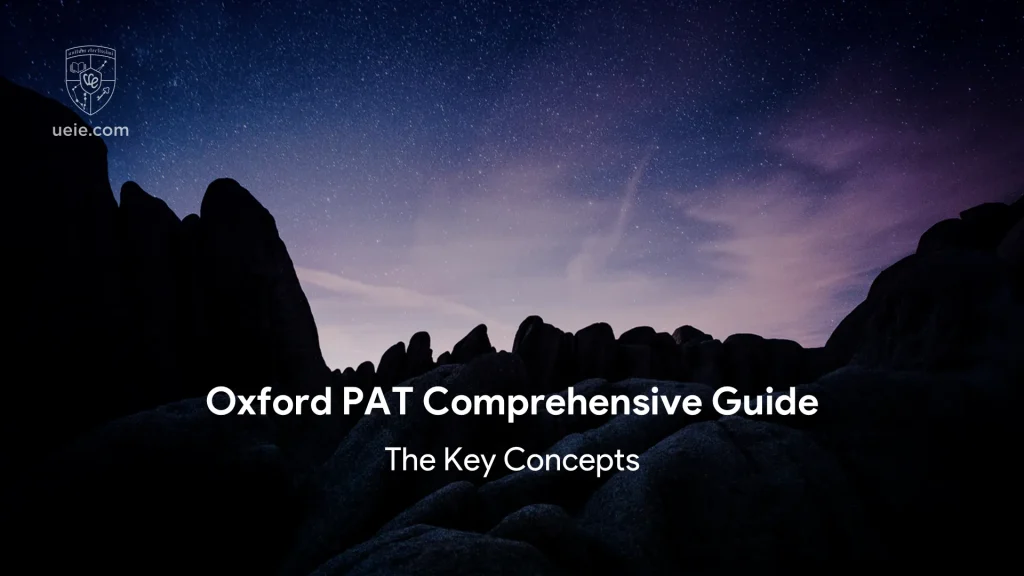
The Oxford PAT Test (Physics Aptitude Test) is a crucial entrance examination used by the University of Oxford to assess the overall physics and mathematical ability of undergraduate applicants for its Physics, Engineering Science, and Materials Science programmes. It focuses on evaluating candidates’ ability to solve problems using physics principles and mathematical tools. For students targeting these programmes, a thorough understanding of the Oxford PAT (especially its latest online format) requirements, content, and assessment methods is vital. To help those planning to apply for 2026 entry accurately grasp the latest exam situation, this article will provide a comprehensive and authoritative interpretation.
After gaining a detailed understanding of the Oxford PAT overview, it is recommended to continue reading my (Mr. Xie Tao’s) series of articles: Oxford PAT Preparation Guide and Oxford PAT Registration Guide, for detailed preparation strategies and registration guidance.
I. Latest Updates on Oxford PAT Test
The PAT test has undergone significant adjustments in recent years. Understanding these core changes, which have been implemented and will continue for the 2025 examination cycle (for 2026 entry), is crucial for preparation.
1. Oxford PAT Test Organisation and Implementation
From 2024 onwards, the University of Oxford has appointed Pearson VUE as the global implementing body for the PAT and other entrance examinations, responsible for test centre arrangements and online testing. However, the examination papers are still set by the Oxford University Physics Department, ensuring the authority and continuity of the exam content and assessment standards.
2. Key Changes
- Fully Online Computer-Based Test: The PAT test has completely transitioned to an online format, conducted at Pearson VUE certified test centres, no longer using paper scripts.
- Question Type Adjustments: All examination questions are now multiple-choice. According to the 2024 papers and official sample questions, this includes both Single Choice and Multiple Choice/Multiple Response formats. The number of questions has also increased to 40.
- Scoring Method: The total mark for the entire paper remains 100, but the 40 multiple-choice questions have unequal values (possibly 2, 3, or 4 marks).
- Calculator: The test system will include an online digital calculator. Candidates must use this online calculator, and bringing or using any personal calculator is strictly prohibited.
II. Who Needs to Take the PAT Test? (For 2026 Entry)
The Oxford PAT is a mandatory entrance examination for applicants to the following specific undergraduate (or integrated Master’s) programmes at the University of Oxford, It must be taken and typically cannot be substituted with other examinations:
Courses UCAS Code Engineering Science H100 Biomedical Engineering H811 Chemical Engineering H800 Civil Engineering H200 Electrical Engineering H620 Information Engineering H630 Mechanical Engineering H300 Materials Science FJ22 Physics F303 Physics and Philosophy VF53 III. Oxford PAT Key Dates
Event Date / Timeframe Notes / Reminders Registration Time 18 June to 19 September 2025 Requires creating an account via the Oxford official website. Test Slot Registration 18 August to 26 September 2025 Must complete Pearson VUE test slot booking before this date. Test Dates 22 October 2025 (Wednesday) and 23 October 2025 (Thursday) Choose a specific test session in the Pearson VUE system. Interview Invites November to December 2025 Sent via email after the University of Oxford completes initial screening. Results Access January 2026 Issued to candidates via the examination registration platform (or email). Important Note: All dates (especially the specific start and end times for registration) are subject to change. Please regularly visit the Oxford PAT page on the University of Oxford Admissions website and the Oxford Admissions Testing page on Pearson VUE’s website for the most authoritative official information.
IV. PAT Test Format and Structure
Since 2024, the Oxford PAT test has adopted a new online format and question structure.
Item Details Test Mode Online Computer-based Test Test Location Global Pearson VUE Certified Test Centres Duration 2 hours (120 minutes) Questions 40 multiple-choice questions (including Single Choice and Multiple Choice) Calculator On-screen calculator provided, no personal calculators allowed Formula Sheet Not Permitted Dictionary Not Permitted Key Points of Interpretation:
- Pure Multiple-Choice Format: This is the biggest change. Preparation strategies need to focus more on techniques for solving multiple-choice questions, the ability to quickly judge and differentiate between distractors, as there are no marks for showing working. The coexistence of single and multiple-choice questions adds complexity.
- Online Computer-Based Test and Calculator: Candidates must adapt to the online testing environment and become proficient in using the online calculator provided by the system. They cannot rely on their familiar personal calculators.
- Time Pressure: Completing 40 physics and mathematics multiple-choice questions in 2 hours means an average of only 3 minutes per question, requiring high speed and efficiency in problem-solving.
- Knowledge and Memory: Formula sheets are not allowed, meaning candidates need to firmly memorise all relevant formulas and physical constants within the syllabus.
V. Oxford PAT Scoring Mechanism and Score Interpretation
Understanding how the Oxford PAT test is scored and what the scores represent is crucial for evaluating your competitiveness and setting preparation goals.
1. Scoring Method
- Total Score and Composition: The maximum score for the PAT is 100. The score is entirely derived from the 40 multiple-choice questions (including single and multiple-choice).
- Question Values: The value of each multiple-choice question is not equal and may be weighted differently based on difficulty or other factors (e.g., possibly 2, 3, or 4 marks).
- Scoring Characteristics: Incorrect answers do not incur penalties, encouraging candidates to attempt all questions. The final score is the sum of the marks for correct answers.
2. Score Report
- Internal Use: Oxford University admissions tutors receive all applicants’ PAT scores directly in November, which are used in conjunction with other application materials (such as the cGCSE mentioned below) for interview shortlisting.
- Candidate Access: Candidates can usually only access their specific PAT scores through the examination registration platform after receiving their final application result from the University of Oxford in January of the following year (i.e., January 2026).
3. Score Interpretation and Competitiveness Analysis
Understanding the relative competitiveness of PAT scores is very important, but please note that Oxford University does not set fixed ‘interview score cut-offs’ or ‘admission score cut-offs’. Admission decisions are always based on a comprehensive assessment of all aspects of an applicant’s materials.
Application of R-Score
In recent years (including the 2024 application cycle), the Oxford Physics Department has primarily used the R-score for interview shortlisting. This score combines the PAT score with a contextualised GCSE score indicator called cGCSE:
R-score before interview (%) = PAT score (%) + 10 x cGCSE
Here, cGCSE is a standardised score that measures a student’s GCSE (or IGCSE) performance relative to the context of their school, typically ranging from -3 to +3. Applicants lacking GCSE information (such as some international students) are assigned a neutral score of 0.
Note: There was a subtle but important change in calculating the R-score in 2024: all negative cGCSE scores were ignored in the calculation. This was undoubtedly a significant advantage for students who did not achieve enough A* (8/9) grades in their GCSE or IGCSE subjects.
Interview Shortlisting Threshold
The interview shortlisting threshold varies each year. The blue line in the diagram below represents the interview shortlisting threshold from 2006-2024. For example, applicants with an R-score of 70% or higher in 2024 were automatically included in the interview shortlist. Some candidates with an R-score slightly below this threshold might also be invited for an interview if they had other outstanding background information or special circumstances (including technical issues encountered during the exam).
PAT Score Competitiveness Analysis
- Average Level: The average PAT score for all applicants in the 2024 examination was approximately 49.6% (significantly lower than the 55.6% in 2023). This may be related to the difficulty of the questions in that year, the first time a fully new format was adopted, or disruptive factors during the examination.
- More Competitive: A PAT score of generally above 65% is considered to significantly increase the chances of being invited for an interview.
- Strongly Competitive: A score of 75% or higher is considered a highly competitive score.
- Lower Scores: Scores below 65% generally make it more difficult to secure an interview, unless there are very strong other application highlights or supporting background factors.
Note that since 2024 was the first year the pure multiple-choice online format was used, and the report for that year mentioned disruptive factors, direct comparison with scores from previous years should be done with caution.
After the interview, the final R-score after the interview is calculated based on the PAT score, cGCSE score, and interview score:
R-score after interview = PAT score (%) + 10 x cGCSE + 2 x interview score (%)
Final Admission
The R-score after the interview, calculated through a series of weighted calculations, carries significant weight in the admission decision. However, it is not the only factor influencing the outcome. The Oxford Physics Department will also comprehensively consider other materials such as recommendation letters and personal statements before making the final decision on whether to admit a candidate.
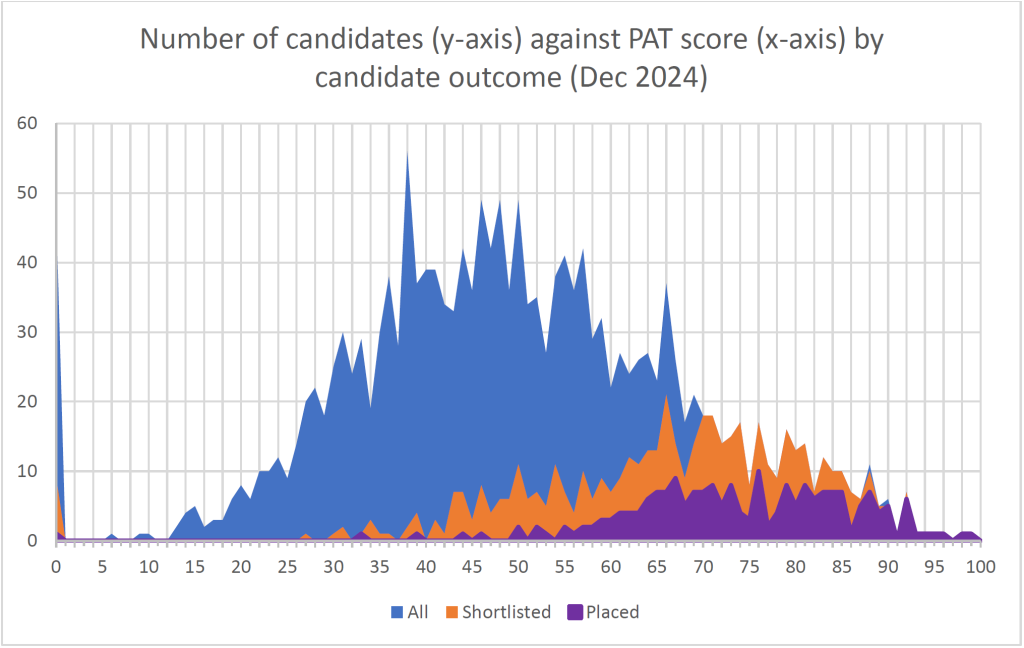
Distribution of PAT Scores and the Number of Admitted Students Published by the Oxford Physics Department in 2024
VI. PAT Test Syllabus and Difficulty Analysis
Accurately understanding the scope and difficulty characteristics of the Oxford PAT is fundamental to developing an effective preparation plan.
1. Syllabus Scope and Version
- Knowledge Base: The PAT syllabus covers the core knowledge points of A-Level Mathematics and AS Physics, as well as some A2 Physics. It is particularly important to note that the syllabus explicitly does not include content from A-Level Further Mathematics.
- Syllabus Version: The current PAT test syllabus is still based on the version revised in 2018. Although the test format has changed, the scope of knowledge remains essentially the same.
2. Syllabus Characteristics
- Concise but In-depth: The official PAT syllabus is very condensed, with the entire content being less than 2 pages of A4 paper. Its design philosophy is not to pursue breadth of knowledge, but rather to deeply examine students’ depth of understanding and ability to apply core physics principles and mathematical tools based on the common foundation of high school curricula in various countries.
- Physics and Mathematics Integration: Questions often tightly integrate physics scenarios with mathematical methods, assessing the ability to apply knowledge comprehensively to solve problems.
3. Knowledge Point Overview
According to the official syllabus, the main areas of examination include:
Mathematics Section
- Basic Mathematics: Arithmetic, Geometry (including coordinate geometry), basic Probability.
- Algebra: Polynomials (including solutions to quadratic equations, factorisation), Inequalities, Graphs of Functions (including transformations, finding stationary points using derivatives), Trigonometric Functions (basic relationships), Indices and Logarithms, Sequences and Series (sum of arithmetic and geometric series), Binomial Theorem (positive integer indices).
- Calculus: Differentiation and Integration of Polynomials (including negative and fractional indices), using differentiation to find gradients/extrema, using integration to find areas, simplifying integrals using symmetry.
Physics Section
- Mechanics: Kinematics (distance, velocity, acceleration, SUVAT equations), Newton’s Laws, Circular Motion, Common Forces (gravity, friction, tension, etc.), Moments, Energy and Momentum (conservation laws, work, power), Springs (Hooke’s Law, elastic potential energy).
- Waves and Optics: Basic properties of waves (transverse/longitudinal waves, amplitude, frequency, wavelength, wave speed), Electromagnetic Spectrum, Reflection and Refraction (Snell’s Law), Interference and Diffraction (concepts), Standing Waves (basic concepts).
- Electromagnetism: Basic Circuits (current, voltage, resistance, Ohm’s Law, series and parallel circuits, power), Electric Fields (force between point charges, force on a charge in a uniform electric field), Magnetic Fields (basic concepts, possibly involving simple applications such as Lorentz force, see syllabus for details), Photoelectric Effect (concept).
- Modern Physics and Astronomy: Atomic Structure (Rutherford model, Bohr model), Solar System Objects (basic knowledge of planets, moons, comets, etc.), Orbital Motion (speed, period, centripetal force/acceleration in circular orbits, involving universal gravitation).
- Thermodynamics: Not included in the 2018 version of the Oxford PAT syllabus, and there have been no thermodynamics questions in the last five years.
4. Understanding ‘Beyond Syllabus’ Questions and Difficulty Analysis
Understanding ‘Beyond Syllabus’
So-called ‘beyond syllabus’ questions in the PAT typically do not test knowledge points outside the syllabus. Instead, they involve applying knowledge from within the syllabus in novel or unfamiliar ways, or they might cover physical models or ideas commonly seen in physics competitions but only briefly touched upon at A-Level. For these types of questions, necessary background information or formulas are often provided in the question.
Difficulty Characteristics
- Higher than A-Level: The PAT demands a depth of thinking, physical intuition, and mathematical application ability far exceeding that of standard A-Level examinations.
- Compared to MAT/STEP: Compared to MAT (primarily pure mathematics), the PAT requires proficiency in both physics and mathematics; compared to STEP (focusing on higher-level pure mathematics proofs), the mathematical difficulty of the PAT is lower, but the application of physics and integrated requirements are higher.
- Impact of Pure Multiple-Choice Questions: Following the reform to pure multiple-choice questions, although there is no opportunity to demonstrate detailed working, the requirement for accuracy in conceptual differentiation, rapid modelling and estimation skills, and multiple-choice strategies (including handling multi-select questions) is higher.
- Difficulty Level Reference: The average PAT scores in recent years (e.g., approximately 49.6% in the 2024 exam ) are generally not high, and scores fluctuate significantly (the average score in 2024 showed a notable decrease compared to 2023). This reflects the high challenge of the examination itself. Achieving a high score requires a solid foundation and excellent comprehensive ability.
VII. How to Register for the Oxford PAT Test?
Registering for the Oxford PAT primarily involves creating an account on the University of Oxford’s official website, linking your application information, and then completing the specific test centre and examination time booking through the Pearson VUE platform.
The specific registration steps, required information, test centre selection, fee details, special requirements applications, and detailed guidance for candidates from different regions are all very important and may involve many details.
For the most complete and accurate step-by-step guidance, please refer to our specially prepared detailed guide:
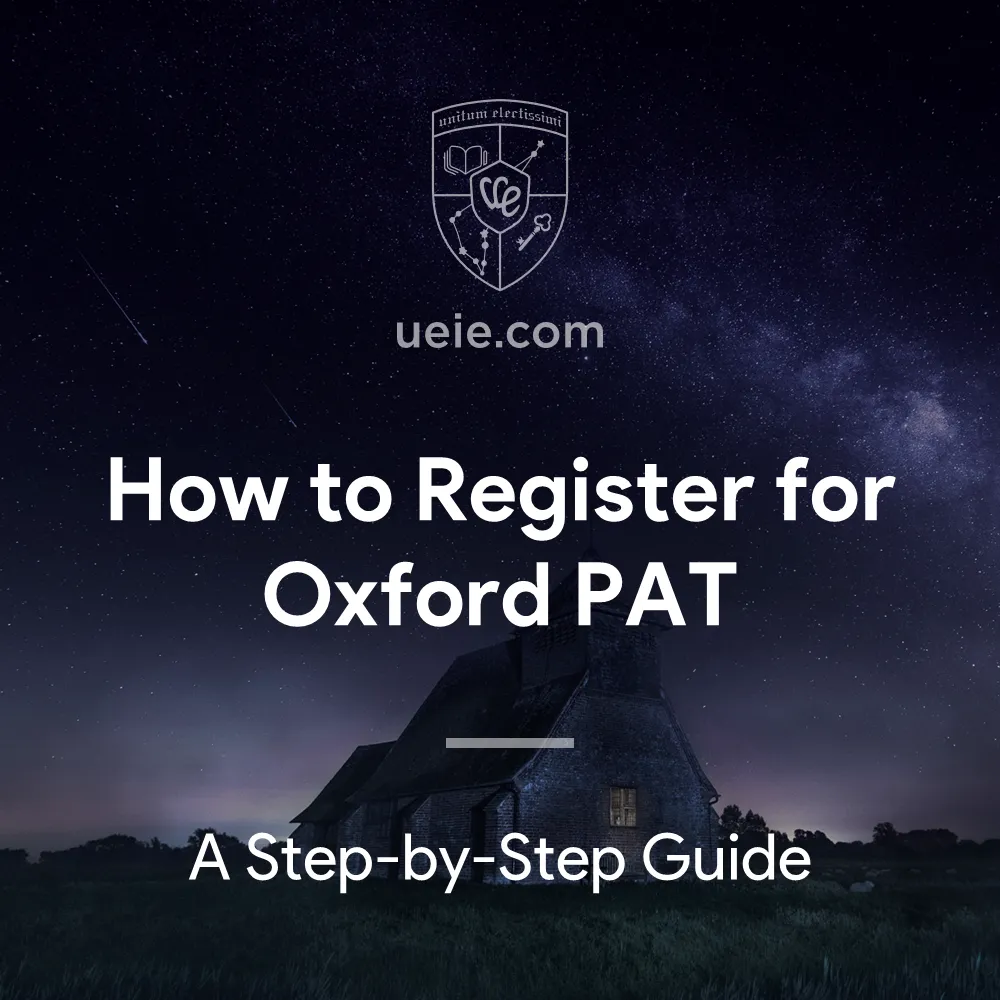
How to Register for Oxford PAT
Register for the Oxford PAT with our simple 4-step guide and get closer to achieving your Oxford dream!VIII. Core Preparation Strategies and Resource Recommendations
Effective preparation not only requires understanding the examination itself but also clarifying the preparation direction and making good use of high-quality resources.
1. Overview of Core Preparation Strategies
The core of PAT preparation lies in a solid foundation of physics and mathematics knowledge, strong problem-solving skills, and adapting to the pure multiple-choice online examination format. Preparation should focus on:
- Consolidating Foundation: Ensuring a deep understanding of all physics and mathematics concepts within the syllabus.
- Improving Application: Training the ability to apply foundational knowledge to complex and unfamiliar situations.
- Practice Strategies: Mastering the techniques for answering multiple-choice questions (including single and multiple-select) and time management.
- Familiarising with the Platform: Adapting to the online examination environment and the use of the online calculator.
For detailed preparation plans, phased training methods, targeted skill enhancement techniques, etc., please be sure to read my specially authored:

Ace the Oxford PAT: Mastering Maths, Physics & Online Test Skills
Aiming to ace the Oxford PAT test? This guide helps you master the essential Maths and Physics syllabus, develop crucial online test-taking skills (MCQ strategies, online calculator proficiency), and build a solid preparation plan for success in Physics or Engineering.2. Official Core Preparation Resources
The official website of the Oxford University Physics Department is the primary platform for obtaining the most authoritative PAT preparation information and materials. All candidates are strongly advised to make full use of the abundant resources it provides:
- Examination Syllabus: Clearly defines the scope of the examination (currently still the 2018 version).
- Past Papers: Provides a large number of past test papers. Note: Pre-2024 papers had different formats. They included written tests and non-multiple-choice questions. But their content and difficulty remain highly valuable. These help understand syllabus requirements and needed abilities.
- Official Online Sample Questions/Practice Tests: The official website or Pearson VUE provides sample questions or practice tests simulating the new online multiple-choice format. It is highly recommended to use these to familiarise yourself with the examination interface and online calculator.
- Annual Reports: Provide important information such as statistical data, average scores, and screening processes from previous years.
- ‘Preparing for the PAT’ Online Course: A free online preparation support programme provided by the Oxford Physics Department, including problem sets, videos, lectures, etc..
3. UEIE Oxford PAT Preparation Resources
I help candidates prepare for PAT systematically. My courses build on years of teaching research. I continuously update preparation materials. This year’s new self-study package includes:
- Oxford PAT Video Lecture Series: Includes in-depth explanation of exam points and accompanying PDF textbooks.
- Oxford PAT Practice Question Bank: Offers an extensive range of topic-based practice questions, designed to supplement the limited number of official past papers and strengthen problem-solving skills.
- Oxford PAT Full-Length Mock Exams: Four full-length simulation papers, featuring entirely original or adapted questions that do not reuse past paper content. These are ideal for refining your exam strategy and ensuring you are in peak condition before the test.
Click to learn more about UEIE PAT preparation resources:

ESAT & PAT On-Demand Prep Suite
The ESAT & PAT On-Demand Prep Suite, developed by Xie Tao, is your all-in-one solution for exam success, which includes video lectures covering Maths, Physics, over 1600 practice questions with detailed solutions, and full-length mock exams for ESAT Maths 1, Maths 2, Physics, and the Oxford PAT. Prepare thoroughly and maximise your score.US$613 – US$2 432Price range: US$613 through US$2 432
4. Other Supplementary Resources
Based on official Oxford recommendations and preparation needs, the following can be selectively used:
- Isaac Physics: Provides a large number of high-quality physics and mathematics problems.
- British Physics Olympiad (BPhO) Past Papers: The style of questions helps develop the ability to solve challenging problems.
- Other Online Platforms or Books: Such as resources compiled by Physics & Maths Tutor (PMT), some physics/mathematics thinking training books, etc..
5. Core Recommendations
It is crucial that official resources form the core of your preparation, especially past papers (bearing in mind the changes in format) and the online practice tests. Depending on your individual needs, carefully select high-quality supplementary materials (such as UEIE’s systematic preparation plans or other officially recommended websites) to support your systematic learning and targeted practice. Finally, ensure you utilise the official Pearson VUE online practice tests to familiarise yourself thoroughly with the computer-based testing environment and the online calculator.
IX. Suggested Next Steps
After reading this Oxford PAT Comprehensive Guide, you should have a clear grasp of the key information about this test. To translate this understanding into effective application preparation, we recommend that you take the following actions immediately:
1. Verify Official Requirements
Revisit the official University of Oxford admissions website (especially the pages for Physics, Engineering Science, Materials Science, and other relevant departments) to carefully confirm the latest and most accurate admission requirements for 2026 entry, including whether the PAT is still mandatory and the specific programmes it applies to.
2. Plan Your Exam Registration
Consult the detailed Oxford PAT Registration Guide to understand the registration process, deadlines, and required materials.
Remember the official start and end dates for registration and be sure to complete all registration and Pearson VUE test slot booking steps before these dates.
3. Develop a Preparation Plan
Read the Oxford PAT Preparation Guide and develop a systematic, personalised preparation timetable and learning strategy based on your own circumstances (physics and mathematics foundation and available time). Start preparing as early as possible; PAT preparation requires a comprehensive and in-depth improvement of physics and mathematics abilities.
4. Select and Utilise Resources
- Make good use of official core resources: Download and study the latest examination syllabus, past papers (noting format changes), online sample questions, and preparation course materials provided on the Oxford Physics Department official website.
- Selective supplementary: Based on your preparation plan, carefully select high-quality supplementary resources, such as UEIE’s PAT preparation lectures and materials, or other officially recommended practice platforms, for systematic learning and targeted training.
- Familiarise yourself with the platform: Be sure to use the official Pearson VUE online practice tests to familiarise yourself with the computer-based testing environment and online calculator.

Oxford PAT Prep Hub
Master the Oxford PAT with UEIE’s Prep Hub! We offer everything you need to succeed: in-depth video lecture series, extensive practice question bank, realistic full-length mock exams, expert guides, and insightful data analysis.Finally, please remember that thorough preparation and a positive mindset are key to facing the PAT challenge. We wish you a smooth preparation, a successful application, and ultimately, admission to your desired university!
-

Cambridge STEP Demystified: All Aspects Covered

For students planning to apply for mathematics-related courses at top UK universities like Cambridge, the STEP exam is both a serious hurdle and a chance to showcase exceptional mathematical aptitude. Successfully navigating this challenge hinges on a clear understanding of its structure and demands. This comprehensive guide aims to provide students and parents with a systematic and clear overview of the essential, up-to-date information about the STEP exam.
I. What is the Cambridge STEP Exam?
Cambridge STEP exam, standing for Sixth Term Examination Paper, is a renowned and highly challenging assessment of mathematical thinking. Since 2024, the responsibility for organising and managing the STEP exams has shifted from Cambridge Assessment Admissions Testing (CAAT) to the OCR (Oxford Cambridge and RSA) examination board.
Unlike standard school mathematics exams, STEP’s primary goal isn’t just to check familiarity with specific syllabus topics. Rather, it thoroughly assesses a candidate’s ability to engage with complex mathematical problems. This involves:
- Applying mathematical knowledge to solve problems in unfamiliar situations.
- Employing rigorous logical reasoning and constructing mathematical proofs.
- Demonstrating depth, adaptability, and creativity in mathematical thought.
For this reason, many leading UK universities offering mathematics-related courses – including Cambridge, Imperial College London, University College London, and Warwick – often make STEP results a key part of their conditional offers, helping them identify applicants with outstanding mathematical potential.
It’s also worth noting that while the University of Oxford doesn’t require STEP for its mathematics and related courses, its official admissions advice encourages strong applicants to sit the papers to further demonstrate their academic strengths.
II. Who Needs to Sit the Cambridge STEP Exam? (For 2026 Entry)
Based on extensive teaching experience and observing numerous applications over the years, dedicated preparation for STEP significantly elevates a student’s mathematical reasoning skills and their capacity to tackle demanding problems. Even though STEP isn’t mandatory for every top UK university mathematics course, students who develop these deeper skills often present as stronger candidates during the application process (especially at interview), ultimately improving their chances of receiving the offer they want.
1. Universities Making Offers Based on STEP Results
In recent times, university admission test requirements for mathematics-related courses in the UK have changed considerably. The wider adoption of the TMUA (Test of Mathematics for University Admissions), in particular, has prompted some universities (such as Imperial College London for its computing courses) to use it as their main assessment tool, thereby adjusting how much they rely on, or strictly require, STEP.
The table below summarises some universities and subject areas that, for 2026 entry, continue to factor STEP results into their admissions considerations (whether as a requirement, an alternative, or simply recommended), detailing their specific expectations:
University Subject Area Requirements on Admissions Tests Grade & Paper Alternative Test / Notes Cambridge Mathematics STEP is compulsory Grade 1 or S in STEP 2 and/or 3 No alternative Imperial College London Computing and related courses TMUA is the primary requirement Grade 2 or above in STEP 2 or 3 STEP may be considered as an alternative only in exceptional circumstances (e.g., unable to sit TMUA, or borderline TMUA result) UCL Mathematics and related courses STEP is optional Grade 2 or above in STEP 2 or 3 Can be used to potentially reduce A Level requirements; AEA Distinction can substitute for STEP result Warwick Mathematics and related courses TMUA / STEP / AEA accepted Grade 2 or above in STEP 2 or 3 TMUA or AEA results can substitute for STEP result 2. Flexible Offers at Cambridge University
For A Level applicants who achieve grades of AAA and obtain Grade 1 in both STEP 2 and STEP 3, some Colleges may extend a flexible offer. Based on previous years’ information and trends, the following Colleges have been known to offer flexible arrangements:
- Downing College: Has been mentioned as part of a flexible offer scheme.
- Emmanuel College: Also listed as participating in flexible offers.
- Girton College: Included in lists of colleges with potential flexible offers.
- Jesus College: Known to consider applicants with AAA and strong STEP results.
- Lucy Cavendish College: Part of the flexible offer scheme.
- Newnham College: Has participated in flexible offer arrangements.
- Robinson College: Listed among colleges with flexible admissions.
- Sidney Sussex College: Known to consider AAA with strong STEP.
- Trinity Hall: Has been part of flexible offer schemes.
Important Considerations:
- Not a Guarantee: Even at these colleges, an alternative offer of AAA with STEP is not guaranteed. It will depend on the strength of your overall application, your STEP grades, and the competition in that particular year.
- Varying STEP Requirements: The specific STEP grades required for an alternative offer can differ between colleges. Some might ask for a Grade 1 in one paper, while others might want a Grade 2 in one or even specific grades in both STEP 2 and STEP 3.
- Other Colleges May Consider: While the above list highlights colleges with a known history of such offers, other colleges might also consider exceptional candidates who narrowly miss the A* grades but perform very well in STEP.
- Check Individual College Websites: The most reliable way to find out the specific admissions policies, including any alternative offer conditions, is to thoroughly check the undergraduate admissions pages of each Cambridge college you are interested in. Look for sections on entry requirements or mathematics admissions specifically.
- Contact Admissions Tutors: If the information isn’t clear online, don’t hesitate to contact the admissions tutor for mathematics at the specific college directly to ask about their policy on alternative offers for applicants with AAA at A-level and strong STEP results.
3. Flexible Offers at Other Universities
- Information Currency: The information presented in the table above is based on current understanding and past experience and is for reference only. University admissions policies (including requirements for entrance tests, specific grade levels, alternative options, etc.) can change annually.
- Official Verification: It is strongly recommended that all applicants must, must, must carefully consult the official admissions website of their target university and course for the latest and most accurate requirements specific to their year of entry (i.e., 2026 entry).
- Imperial College Situation: Please pay particular attention to verifying the latest official requirements for Imperial College London (including both the Department of Mathematics and the Department of Computing) for 2026 entry to determine the precise applicability of STEP.
- Reduced A Level Requirements: For some universities’ mathematics and related courses, such as Birmingham, Bristol, Exeter, Lancaster, and Nottingham, submitting STEP results with your application may lead to consideration for a reduced A Level grade requirement.
4. Oxford University Requires MAT
For mathematics, computer science, and other related courses at the University of Oxford, candidates are required to take the MAT (Mathematics Admissions Test). Although STEP results are not an entry requirement, Oxford encourages candidates to sit the STEP exams and submit their results to provide a comprehensive assessment of their academic ability.
5. Key Recommendation
After deciding on your target universities and courses, the absolute first step should always be to meticulously check the official university website for the most current and accurate admissions requirements published for your intended year of entry.
III. Key Dates for the 2025 STEP Exam
STEP Registration Opens 1 March 2025 STEP Registration Closes 4 May 2025 STEP 2 Test Date 11 June 2025 STEP 3 Test Date 16 June 2025 STEP Results Released 14 August 2025 Results Enquiry Deadline 21 August 2025 Important Reminders:
- Official Verification: The OCR examination board reserves the right to adjust these dates. Please ensure you regularly visit the official OCR STEP webpage for the latest and most authoritative date information.
- Scheduling Conflicts: STEP examination dates may clash with A Level or other important examinations. Be sure to check all your examination timetables in advance and plan accordingly.
IV. STEP Exam Format and Paper Structure
1. Basic Information
Item Details Answer Format Paper-based, handwritten answers Exam Duration 3 hours each for STEP 2 and STEP 3 Formula Sheet No official formula sheet is provided. Formulae listed in the specification appendix must be known. Formulae outside the syllabus will be given within the question (policy since 2019). Calculator Calculators are not permitted. Bilingual Dictionary Bilingual dictionaries are not permitted (policy since 2023). 2. Question Format
Since the cancellation of STEP 1 from 2021 onwards, the STEP now consists only of STEP 2 and STEP 3. Each paper contains 12 questions (prior to 2019, there were 13). Candidates may attempt any number of questions, but only the six questions with the highest marks will count towards the final score.
The paper structure and question distribution are as follows:
Paper Structure
Details Section A 8 Pure Mathematics questions Section B 2 Mechanics questions Section C 2 Statistics questions Total 12 questions per paper V. How are STEP Results Calculated and Graded?
1. Scoring Method
- Basis of Marking: Each question is marked out of 20 marks.
- Scoring Rule: The scores from the candidate’s best six questions are counted towards the total score. This means the maximum possible total score is 120 marks.
- Number of Questions Answered: There is no limit to the number of questions a candidate may attempt. If a candidate answers more than six questions, all attempted questions will be marked, but only the best six scores will contribute to the final total. This encourages candidates to focus on completing questions to a high standard, rather than aiming purely for quantity.
2. Grade Levels
STEP results are ultimately presented using five grades:
Grade Meaning Proportion General Description S Outstanding Approx. top 5-15% Highest level, typically awarded to a small fraction of top-performing candidates 1 Very Good Approx. top 15-30% Very strong performance, well above average 2 Good Approx. top 30-50% Good performance, meets the entry threshold set by many universities 3 Satisfactory Approx. top 50-80% Fair performance, may not meet offer conditions in some cases U Unclassified Remaining approx. 20% Did not meet the standard required for a classified grade Note: The proportion of candidates achieving each grade can vary from year to year. The descriptions above are general indicators.
3. Grade Boundaries
Grade boundaries refer to the minimum raw score (out of 120) needed to achieve each grade (S, 1, 2, 3).
- Not Fixed: Unlike some standardised tests, STEP grade boundaries are not fixed.
- Influencing Factors: The boundaries are adjusted each year based on the overall difficulty of the paper and the performance of the cohort of candidates sitting the exam that year. Grade boundaries are set independently for the STEP 2 and STEP 3 papers.
- Referencing Historical Data: To get an idea of the approximate scores typically required to achieve each grade in previous years, candidates can consult historical grade boundary data. This can help in setting more specific target scores during preparation.
You can find compilations of historical STEP grade boundaries and related data analysis through various online resources, including dedicated preparation platforms.
VI. Overview of the STEP Examination Syllabus
The STEP syllabus is based on the standard A Level Mathematics and A Level Further Mathematics specifications but extends beyond them in depth and scope.
1. Comparison of Knowledge Scope for STEP 2 and STEP 3
Exam Prerequisite Knowledge Core Knowledge Areas Additional Notes STEP 1 A Level Mathematics Pure Maths, Mechanics, Statistics Exam cancelled, but its syllabus content forms assumed knowledge for STEP 2 and STEP 3. STEP 2 A Level Mathematics + AS Further Mathematics Pure Maths, Mechanics, Statistics Requires mastery of specific additional topics and requirements detailed in the official STEP 2 specification. STEP 3 A Level Mathematics + A Level Further Mathematics Pure Maths, Mechanics, Statistics Syllabus encompasses STEP 2 content, plus further specific topics and requirements from the STEP 3 specification. 2. Depth Beyond the Syllabus and Exam Style
It is crucial to recognise that although STEP builds upon A Level knowledge, the difficulty, depth, required flexibility of thought, and the demand for rigorous proof in its questions significantly exceed those found in standard A Level examinations. STEP places greater emphasis on:
- Assessing a student’s profound understanding of fundamental mathematical concepts.
- Testing a student’s ability to apply knowledge to solve problems in novel and complex situations.
- Evaluating the rigour and clarity of a student’s logical reasoning and construction of mathematical proofs.
- Merely meeting the requirements for A Level examinations is far from sufficient to tackle the challenge of STEP.
3. Obtaining the Latest Official Specification
Preparation for STEP must be based on the latest official examination specification published by OCR. The specification details the precise knowledge points, theorems, methods, and any potential exclusions required for each paper (STEP 2 and STEP 3).
All candidates are strongly advised to download the most recent version of the STEP specification directly from the official OCR website.
4. Recent STEP Syllabus Revisions
The STEP specification is not revised every year, but understanding the main adjustments made in recent years can be helpful, particularly when using past papers for practice. Here is a summary of key changes to the STEP exams since 2019:
- 2019: Adjustments were made to the scope of STEP 2 and 3, and the number of questions per paper was reduced from 13 to 12.
- 2020: Minor clarifications were added to the Pure Mathematics, Mechanics, and Statistics sections of the (now discontinued) STEP 1 specification.
- 2021: The STEP 1 was cancelled, but its specification content remains relevant as assumed knowledge.
- 2022: Minor clarifications were added to the Statistics sections of the STEP 2 and 3 specifications.
- 2023: The use of bilingual dictionaries was prohibited. Additionally, two descriptive points within the Mechanics section of the STEP 2 specification were revised.
- 2024 & 2025: The specification remains unchanged from the 2023 version.
VII. How to Register for the STEP Exam?
Registration for the STEP exam typically needs to be completed through an authorised test centre.
1. Finding a Test Centre
Most candidates will need to register and sit the exam via an authorised test centre. You can check if your school or college is an authorised centre, or find a nearby open centre, through the official OCR website.
2. Obtaining Detailed Registration Procedures
The specific steps for registration, the information required (such as UCAS ID, university choices), centre selection, payment of fees, applications for access arrangements (special requirements), and detailed guidance for candidates in different regions are all important and can involve considerable detail.
For comprehensive and precise step-by-step instructions, please refer to our dedicated guide: 《Cambridge STEP Registration Guide》
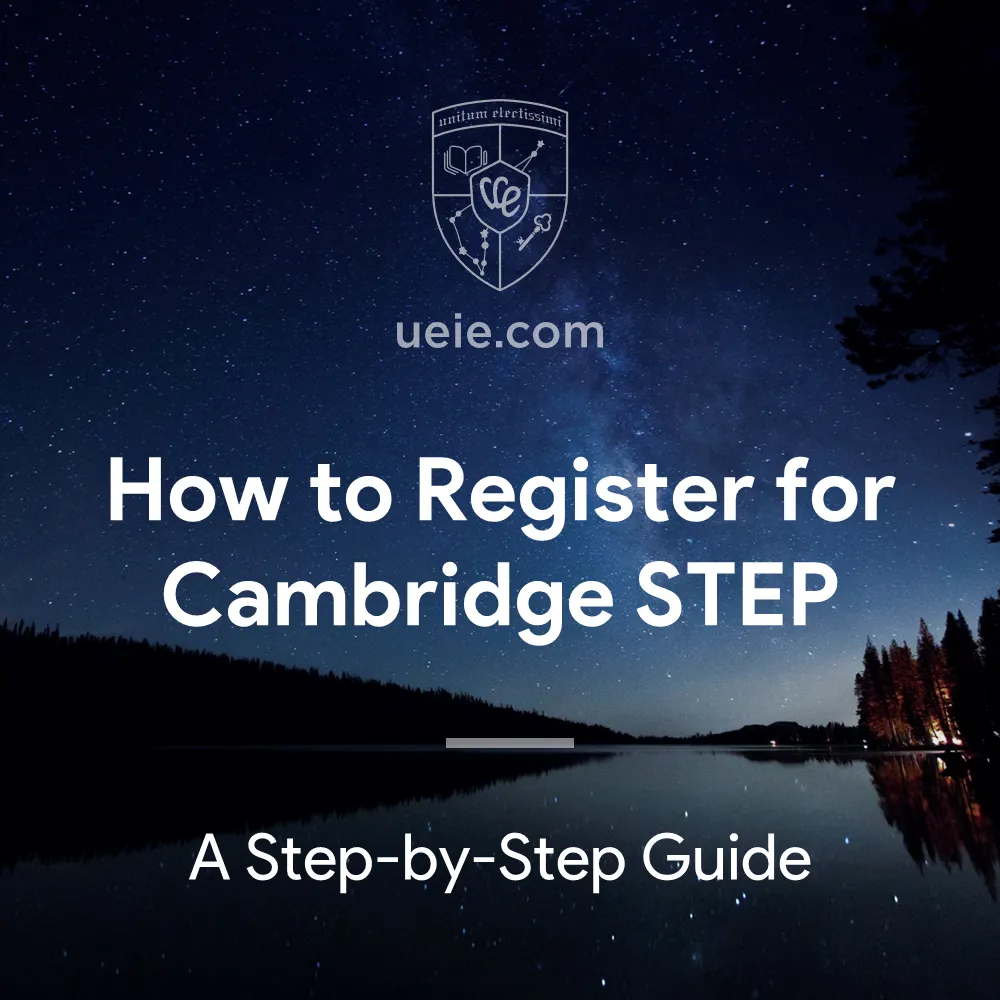
How to Register for Cambridge STEP
Simplify your Cambridge STEP journey. Four steps to introduce everything you need to know about how to register for Cambridge STEP.VIII. How to Prepare Effectively for Cambridge STEP?
Given the depth, unique style, and difficulty of the STEP exam—which significantly surpasses A Level—systematic and efficient preparation is an absolute prerequisite for achieving a desirable score. This is not a challenge that can be overcome with last-minute cramming or by simply working through a few practice papers.
1. Importance of Time Commitment and Planning
Based on official recommendations and the experience of previously successful candidates, effective STEP preparation typically requires long-term, consistent effort. Many students who achieve high grades (such as Grade 1 or above) often dedicate 9 months or even longer to systematic preparation, accumulating hundreds of hours of effective study time. Therefore, I strongly advise any students considering taking STEP to begin their preparations as early as possible.
2. Core Elements of Preparation (Overview)
Successful STEP preparation generally revolves around several core elements:
- Deep Understanding of the Specification: This involves not only covering A Level Mathematics and Further Mathematics knowledge but also mastering the specific requirements and depth outlined in the STEP specification.
- Familiarity with Past Paper Style: Through extensive practice with historical papers, candidates need to adapt to STEP’s unique question phrasing, logical flow, and difficulty gradient.
- Enhancement of Core Skills: Focus should be placed on training higher-order problem-solving techniques, rigorous logical reasoning, clear mathematical proof writing, and the ability to maintain composure and computational accuracy under pressure.
3. Obtaining Detailed Preparation Strategies and Resources
- How should you formulate a detailed preparation plan?
- What learning methods should be employed at different stages (e.g., systematic topic training, timed practice, mock exams)?
- What are the recommended learning resources?
- How can you target specific core skills for improvement?
- …
The answers to these questions, along with more detailed advice on preparation timelines and study pathways tailored for students with different backgrounds, are discussed in depth within my dedicated guide:《Cambridge STEP Preparation Guide》

Cambridge STEP Preparation Guide: Strategies for Top Grade Success
Achieve top grades (1 or S) in the challenging Cambridge STEP exam. This masterclass guide details effective preparation strategies, essential skills development (calculation, proof, problem-solving), Further Maths integration, resource management, and effective time planning.IX. Official Resources and Related Preparation Materials
Alongside mastering preparation techniques, accessing and utilising high-quality resources is equally crucial. Below are some key recommended resource channels:
1. Core Official OCR Resources
The website of OCR, the body responsible for administering the STEP exams, is the primary source for the most authoritative preparation materials. All candidates should visit and make full use of the resources provided there, which mainly include:
- The latest STEP Specification
- Past Papers
- Mark Schemes
- Examiners’ Reports
- Other sample materials (such as sample answer booklets)
It is highly recommended to directly access the dedicated STEP page on the OCR website to find and download these essential materials.
2. UEIE STEP Preparation Courses and Materials
While official past papers are the best practice material, the official mark schemes can sometimes be brief, lack detailed explanations of the thought process, or occasionally contain minor errors or ambiguities. This can pose challenges for independent study.
If, while working through past papers, you require more detailed step-by-step explanations, deeper analysis of the underlying logic, or clarifications and corrections to official answers, consider the Cambridge STEP Video Lecture Series presented by myself (Teacher Xie Tao). This course includes detailed video walkthroughs for a large selection of past paper questions, helping you understand the logic and techniques behind the problems, not just the final answer.
Click to see how the Cambridge STEP Video Lecture Series provides in-depth analysis of past papers.
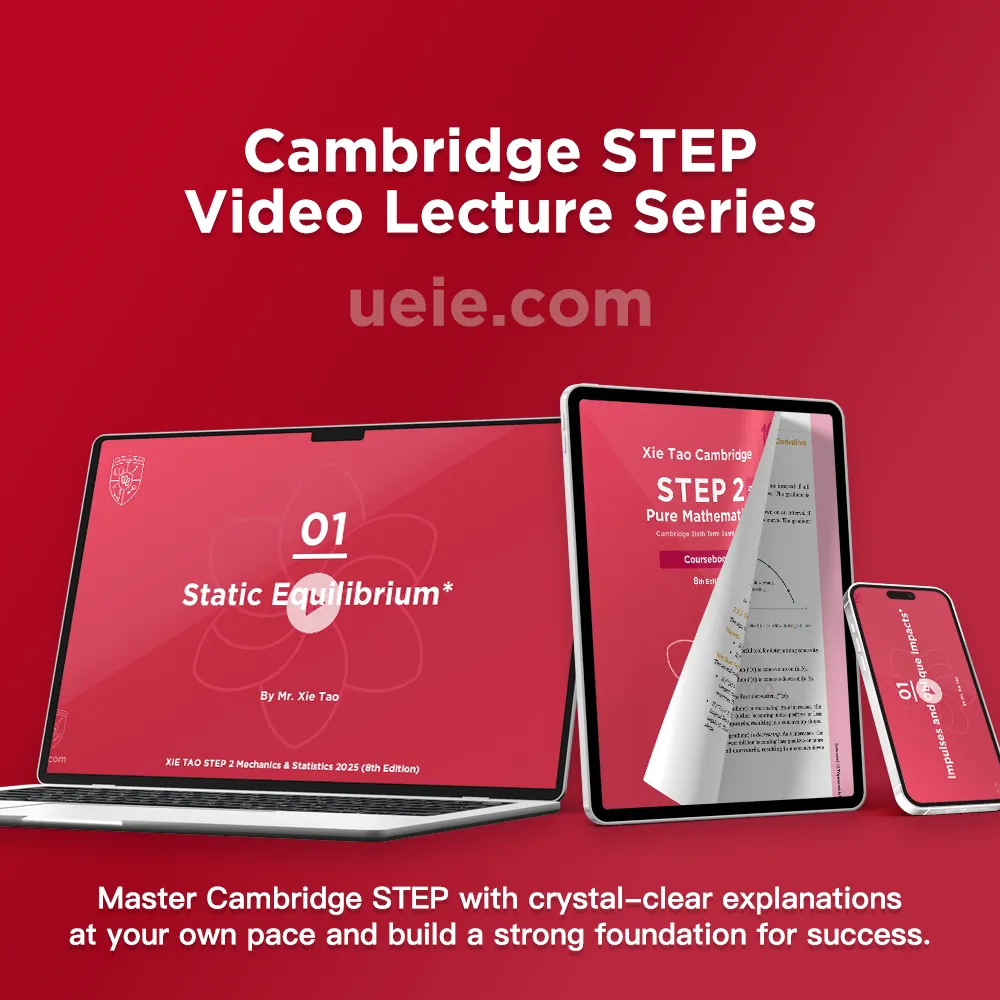
Cambridge STEP Video Lecture Series
Master the Cambridge STEP exam with our in-depth Video Lecture Series. These courses, developed by Xie Tao, cover STEP 2 & 3 and provide a flexible, on-demand learning experience with expert guidance and proven strategies for achieving top scores.US$155 – US$1 430Price range: US$155 through US$1 430
Complementary to the video lecture series are the Cambridge STEP Practice Question Bank, organised by topic. These sets feature carefully selected past paper questions supplemented by extension competition-style problems, designed to enhance the efficiency and effectiveness of your practice.
Click to view and try the Cambridge STEP Practice Question Bank.

Cambridge STEP Practice Question Bank
Master the Cambridge STEP exam with our extensive collection of Practice Question Bank. Created by Xie Tao, this resource features over 1000 problems with comprehensive solutions, covering all core topics from STEP 2 & 3 (Pure Maths, Mechanics & Statistics), designed to reinforce your understanding and boost your score.US$141 – US$1 143Price range: US$141 through US$1 143
These STEP preparation materials are revised annually and are currently updated to the 8th Edition for 2025. They encapsulate the essence of my decade-plus experience in teaching and research focused on Oxbridge admissions tests and mathematical competitions. I hope they can effectively help you overcome preparation hurdles, boost your problem-solving confidence, and strive towards higher target grades!
3. University of Cambridge STEP Support Programme
The University of Cambridge offers a free online STEP Support Programme designed to help all students (especially those who may lack access to specialist school support) prepare effectively for the STEP exams. This platform provides:
- Learning modules covering key topics from the STEP specification.
- Detailed notes, exercises, hints, and full solutions.
- A structured online learning environment.
This is an extremely valuable official free resource, and all students preparing for STEP are encouraged to utilise it:
4. Other Recommended Resources
In addition to the core resources mentioned above, several other platforms and materials may aid your STEP preparation:
- MEI (Mathematics Education Innovation): As a UK charity promoting mathematics education, the MEI website often provides resources and support materials related to A Level Further Mathematics and university entrance tests, including STEP.
- Underground Mathematics: Also supported by the University of Cambridge, this project offers a wealth of challenging and thought-provoking higher mathematics problems, particularly useful for cultivating the deep thinking and problem-solving skills required for STEP.
- Online Communities and Forums: Platforms commonly used by UK students, such as The Student Room (TSR), often feature discussions, shared experiences, and advice related to STEP preparation. However, please exercise caution and critically evaluate the reliability of information from such sources.
- Relevant Mathematics Books: There are various books available targeting STEP preparation or advanced mathematical problem-solving skills. One example officially recommended by Cambridge is: 《Advanced Problems in Mathematics: Preparing for University》.
- Core Advice: Focus on quality over quantity when selecting resources. It is advisable to centre your preparation around the official OCR past papers and specification, combined with systematic use of the Cambridge STEP Support Programme. Supplement these core resources selectively based on your individual needs (which could include materials like the UEIE courses and question sets).
X. What Next?
Having read through this Cambridge STEP Comprehensive Guide, you should now have a clear understanding of the examination. To translate this understanding into effective action, I recommend the following steps:
1. Verify Official Requirements
Visit the official websites of your target universities and specific courses. Carefully confirm their latest and most accurate admissions requirements, paying close attention to any specific stipulations regarding STEP, TMUA, or MAT for your entry year. This is the foundation for all planning.
If you wish to understand the differences between these tests, you can consult my article: STEP vs TMUA vs MAT: A Comprehensive Comparison.
2. Plan Exam Registration
Consult the Cambridge STEP Registration Guide to understand the detailed registration process, key dates, and required information.
Make a note of the registration deadline and ensure you complete all steps before then.
3. Create a Preparation Plan
Read the Cambridge STEP Preparation Guide. Based on your individual circumstances and available time, devise a systematic and personalised preparation timetable and study strategy. Start preparing early; STEP requires sustained, long-term effort.
4. Utilise Core Resources
Download and diligently study the latest OCR specification and past papers.
Make use of the free University of Cambridge STEP Support Programme.
Incorporate other recommended books and course materials as needed.
5. Seek Systematic Support (If Needed)
If you require more structured guidance, in-depth explanations, or additional practice resources during your preparation, consider exploring the UEIE STEP series of preparation courses and materials.
Click to browse the UEIE Cambridge STEP Prep Hub – Courses, Practice Sets & More Resources.
Finally, remember that thorough preparation is the key to success. I wish you the very best in your STEP preparation journey and hope you achieve your desired outcomes in your university applications!
-
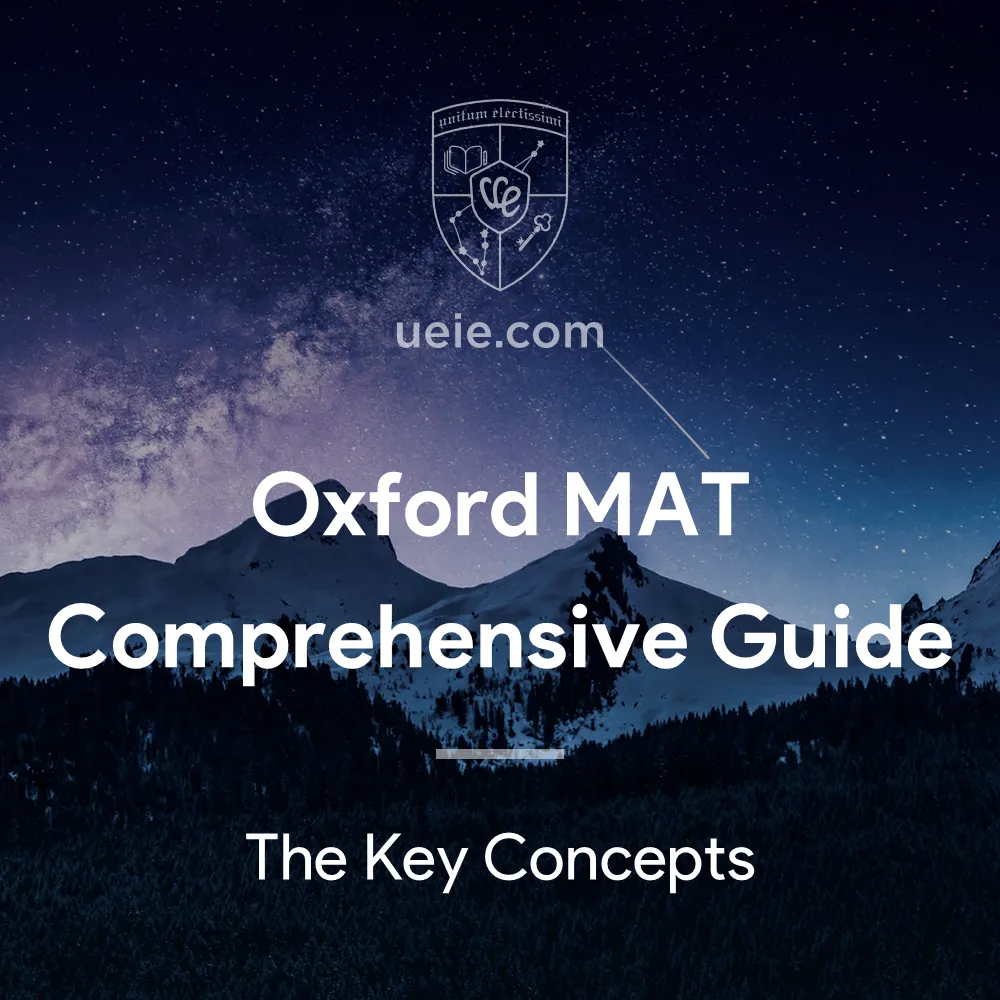
Oxford MAT Unpacked: Mastering the Test for Maths & CS Admissions

The Oxford MAT test (Mathematics Admissions Test) is an entrance examination used by the University of Oxford to assess the mathematical aptitude and potential of undergraduate applicants for Mathematics, Computer Science, and related degree programmes. It primarily evaluates a student’s mathematical thinking, logical reasoning, and problem-solving abilities.
To assist students planning to apply for 2026 entry in mastering the latest and most accurate MAT test information, this document (revised by Mr. Xie Tao) will systematically outline its key developments, requirements, format, scoring, syllabus, and preparation resources.
After understanding this overview of the MAT, it is recommended to continue reading the Oxford MAT Preparation Guide and the Oxford MAT Registration Guide for detailed preparation strategies and registration guidance.
I. Latest Oxford MAT Developments and Changes (2025 Examination Season)
The Oxford MAT test underwent a series of significant changes in 2024. Candidates must understand these core changes. The exam board has implemented them. They will continue through the 2025 exam season (for 2026 entry).
- Test Administrator: The University of Oxford continues to designate Pearson VUE as its global partner for administering admissions tests. The examination will still be conducted at Pearson VUE authorised test centres.
- Test Format: The Oxford MAT has transitioned entirely to an online, computer-based examination. The process no longer involves paper-based question papers or answer sheets.
- Paper Structure: The test has adopted a new, unified paper structure. All candidates applying for relevant degree programmes will sit the same paper, comprising 25 multiple-choice questions and 2 short-answer questions. Answers to the short-answer questions must be typed using a standard keyboard. The practice of having different combinations of questions for different degree programmes has been discontinued.
- Question Setters: It is important to note that, despite the changes in administration and format, the responsibility for setting the MAT questions remains with the Mathematical Institute at the University of Oxford, ensuring the continuity of its academic standard and style.
For students preparing for the 2025 Oxford MAT test, it is imperative to base their preparation and practice on the new model of an online, computer-based test featuring multiple-choice and short-answer questions.
II. Who Needs to Take the Oxford MAT Test? (2026 Entry Requirements)
Clarifying which universities and degree programmes require MAT scores is the first step in determining whether you need to sit this examination. According to the latest information, the MAT is currently primarily and mandatorily used by the University of Oxford for admission to its specific undergraduate programmes.
1. University of Oxford
For 2026 entry, candidates for the following undergraduate (or integrated Master’s) degree programmes at the University of Oxford must take the MAT test at the time of application, and there is no alternative test to the Oxford MAT:
Degree Programme UCAS Code Mathematics G100 Mathematics and Statistics GG13 Mathematics and Philosophy GV15 Mathematics and Computer Science GG14 Computer Science G400 Computer Science and Philosophy IV15 2. Other Universities
Imperial College London: Since the 2024/25 admissions cycle, the Department of Mathematics no longer requires applicants to take the MAT. Their specific requirements involve the TMUA, STEP, or other assessment methods. The Department of Computing, however, requires applicants to take the TMUA examination. Please consult the Imperial College London website for the most current information.
University of Warwick: Since the 2024/25 admissions cycle, the Mathematics and Statistics departments no longer accept MAT scores. Instead, they require applicants to provide TMUA scores, or, under specific conditions, accept STEP scores as an alternative. Please consult the University of Warwick website for their latest detailed requirements.
Conclusion: In the current admissions cycle (for 2026 entry), the MAT can essentially be considered a mandatory entrance examination exclusively for the aforementioned degree programmes at the University of Oxford. Students applying to related programmes at other universities should focus on the TMUA, STEP, or other entrance examinations specified by those institutions.
III. MAT Test Key Dates (2025-2026 Cycle)
Students planning to apply for 2026 entry should pay close attention to the following key dates related to the MAT examination. It is imperative to refer to the latest information published on the University of Oxford’s official website and plan accordingly in advance:
Event Date / Timeframe Notes / Reminders Registration Time 18 June to 19 September 2025 An account must be created via the Oxford website. Test Slot Registration 18 August to 26 September 2025 Ensure Pearson VUE test slot booking is completed by this date. Test Dates Wednesday, 22 October 2025 and Thursday, 23 October 2025 Select a specific test session via the Pearson VUE system. Interview Invites November to December 2025 Sent by email after Oxford University completes its shortlisting. Results Release January 2026 Released to candidates via the test registration platform (or email notification). Important Note: All dates (particularly the specific start and end times for registration) are subject to change. Please ensure you regularly visit the MAT page on the University of Oxford admissions website and the Pearson VUE Oxford admissions test page for the most authoritative official information.
IV. Oxford MAT Test Format and Structure
Since the reforms in 2024, the Oxford MAT has adopted a new online format and a unified structure, as detailed in the table below.
Item Details Test Mode Online Computer-based Test Test Location Global Pearson VUE authorised test centres Duration 150 minutes (2.5 hours) Structure Unified Paper - 25 Multiple Choice Questions
- 2 Short Answer Questions
Requirement All candidates must answer all 27 questions; short-answer questions require typed input using a standard keyboard. Calculator Not Permitted Formula Sheet Not Permitted Dictionary Not Permitted Key Points Explained
- Online, computer-based test: Candidates need to familiarise themselves with the online examination environment and interface.
- Unified paper: There is no longer a differentiation by degree programme; all candidates face the same challenge.
- Short-answer input: Practice in typing mathematical symbols and expressions using a keyboard is required.
- No auxiliary tools: This places high demands on mental arithmetic, written calculation skills, and the proficient recall of formulae.
V. Oxford MAT Scoring Mechanism and Interpretation of Results
Understanding how the MAT test is scored and what the scores signify can help candidates set targets and evaluate their performance more scientifically.
1. Scoring Method
The MAT test has a maximum score of 100 marks.
Question Weighting
- There are 25 multiple-choice questions, totalling 70 marks. The typical mark distribution is:
- Questions 1-10: 2 marks each (20 marks total)
- Questions 11-20: 3 marks each (30 marks total)
- Questions 21-25: 4 marks each (20 marks total)
- There are 2 short-answer questions, worth 15 marks each, totalling 30 marks. Partial marks are awarded for short-answer questions based on the correctness and clarity of the solution steps and the final answer.
Scoring Features
- No negative marking: Incorrect answers to multiple-choice questions do not result in a deduction of marks; therefore, candidates are encouraged to attempt all questions.
- Raw scoring: The scores for each question are directly summed to produce the final mark; there is no complex weighting or conversion.
2. Results Reporting
- Internal Use: Admissions tutors at the University of Oxford receive candidates’ MAT scores in November, which are used in conjunction with UCAS application materials for shortlisting for interviews.
- Candidate Enquiries: Candidates typically receive their final application outcome from the University of Oxford the following January (i.e., January 2026) before they can access their specific MAT score via the test registration platform.
3. Interpretation of Results
The set of charts below presents official data on MAT scores and the number of students admitted to related degree programmes since 2007. This includes the average scores for All Applicants, Shortlisted Applicants, and Successful Applicants, as well as the corresponding numbers of applicants, those shortlisted, and those who received offers.
As can be seen from the charts, the aforementioned three sets of Oxford MAT average scores vary each year. Furthermore, there is no definitive ‘admissions threshold’ or ‘cut-off score’ for the MAT examination – final admission decisions are based on a holistic assessment of the applicant’s overall profile, with the MAT score being merely one significant component. This point is also evident from the distribution charts of MAT scores and admission numbers published officially over the years, as illustrated below.
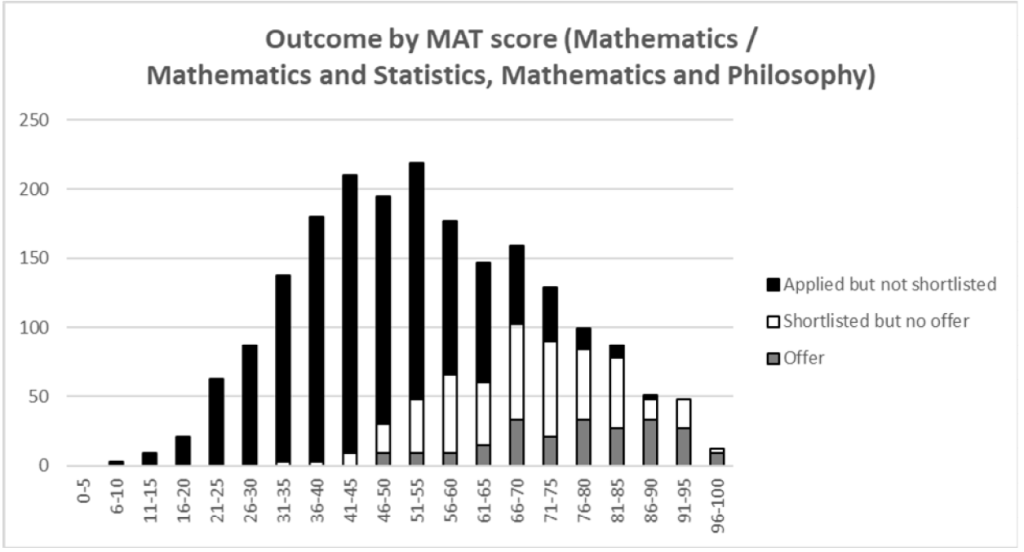
Distribution of MAT Scores for Each Range Published by the Oxford Mathematics Department in 2024
4. Competitiveness Analysis
Based on student cases I have tutored over the past decade and officially published MAT results, the higher the MAT score, the greater the chance of admission. Generally speaking:
- High-scoring range (85 marks and above): Students achieving this level of score usually possess strong overall qualities. Provided they perform consistently in the interview, their likelihood of receiving an offer is very high.
- Good chance of interview range (65 marks and above): Students who achieve an average score or slightly below average, provided their overall application is strong, are generally given an interview opportunity by Oxford. However, for students from mainland China, a higher score, perhaps 70 or even 75 and above, may be necessary to secure an equivalent chance of an interview.
- Average level and below (below 50 marks): It is generally more difficult to receive an interview invitation unless there are particularly outstanding aspects in the application materials or special circumstances such as regional or school-based policy considerations.
VI. Oxford MAT Test Syllabus and Difficulty Analysis
Accurately grasping the scope and difficulty characteristics of the Oxford MAT is fundamental to formulating an effective preparation plan.
1. Test Syllabus Scope
- Knowledge Base: The MAT syllabus is primarily based on the Pure Mathematics component of A-Level Mathematics (excluding A-Level Further Mathematics).
- Syllabus Stability: The MAT syllabus is relatively stable and is not revised annually. The current official version provided was published in 2018. Although the examination format changed in 2024, the scope of knowledge remains unchanged.
2. Syllabus Characteristics and ‘Beyond the Syllabus’ Content
- Concise yet In-depth: The official MAT syllabus is relatively concise, covering a narrower range of topics than the full A-Level Mathematics. However, this does not mean the examination is simple. The University of Oxford’s design philosophy aims to base the test on the common foundations of mathematics curricula across different countries to ensure fairness, but the questions will delve deeply into students’ understanding, application, and extension of fundamental concepts.
- Thinking over Knowledge: The core of the examination is to assess mathematical thinking potential, the rigour of logical reasoning, and the ability to solve non-standard problems, rather than merely testing the recall and reproduction of knowledge points.
- Common ‘Beyond the Syllabus’ Topics: Despite the limited syllabus scope, MAT questions frequently feature topics that are not typically covered in depth or at all in A-Level (or even Further Mathematics) courses, requiring candidates to use foundational knowledge for reasoning and problem-solving. These common themes include, but are not limited to:
- Elementary Number Theory
- Logic and Proof
- Recurrence Relations
- In-depth applications of Sequences and Series
- Basic Algorithmic Thinking
- Combinatorial Problems
3. Knowledge Point Distribution
The knowledge points tested in the MAT test are relatively evenly distributed, covering core areas of A-Level Mathematics such as Algebra, Functions, Coordinate Geometry, Trigonometry, Calculus, and Sequences and Series. It also incorporates logical reasoning and some ‘beyond the syllabus’ mathematical ideas. For a detailed breakdown of specific knowledge points, please refer to the official syllabus.
For a more in-depth research analysis of MAT test hotspots and difficulties, please refer to my previous article:
MAT Secrets: Expert Insights into Exam Difficulty and Patterns
4. Difficulty Characteristics and Analysis
- Higher than A-Level: The depth of thinking, flexibility, and demand for rigour in MAT questions are significantly higher than in standard A-Level examinations. It requires candidates to apply familiar knowledge in novel and unfamiliar contexts.
- Comparison with STEP Examination: The MAT does not demand as broad or as deep knowledge of Further Mathematics as STEP, and the question lengths are typically shorter. However, the MAT similarly emphasises rigorous logic and clear expression, and may include more ‘compact’ but ingeniously designed problems.
- Comparison with TMUA Examination: The TMUA places more emphasis on the rapid and accurate application of AS Mathematics knowledge and logical judgment under intense time pressure. The time pressure in the MAT is relatively less, but it focuses more on the depth of mathematical thinking, creativity, and insight into problem-solving.
- Recent Difficulty Trends: Judging by the average scores in recent years, the difficulty of the MAT has remained at a high level. The average score after the 2024 reforms saw a slight increase, but this may be related to the increased proportion of multiple-choice questions and does not necessarily indicate a decrease in the intellectual difficulty of the questions themselves. Achieving a high score (e.g., 75 marks or above) remains a significant challenge for most candidates.
For a more in-depth comparison of the Oxford MAT test with the STEP and TMUA examinations, you can refer to my article:

STEP vs TMUA vs MAT: A Strategic Comparison to Choose Your Maths Test
Confused about STEP, TMUA, and MAT for top UK universities? This strategic comparison breaks down the key differences: format (paper vs online), syllabus (FM required?), focus (proof vs speed vs logic), difficulty, and university requirements. Make an informed choice.VII. How to Register for the MAT Test?
Registering for the MAT test primarily involves creating an account on the University of Oxford’s official website and linking it to your application information, followed by booking a specific test centre and time slot via the Pearson VUE platform.
The specific registration steps, required information, test centre selection, fee information, applications for special arrangements, and detailed guidance for candidates in different regions are all very important and may involve numerous details.
To obtain the most complete and accurate step-by-step operational guidance, please be sure to consult our specially prepared detailed guide:
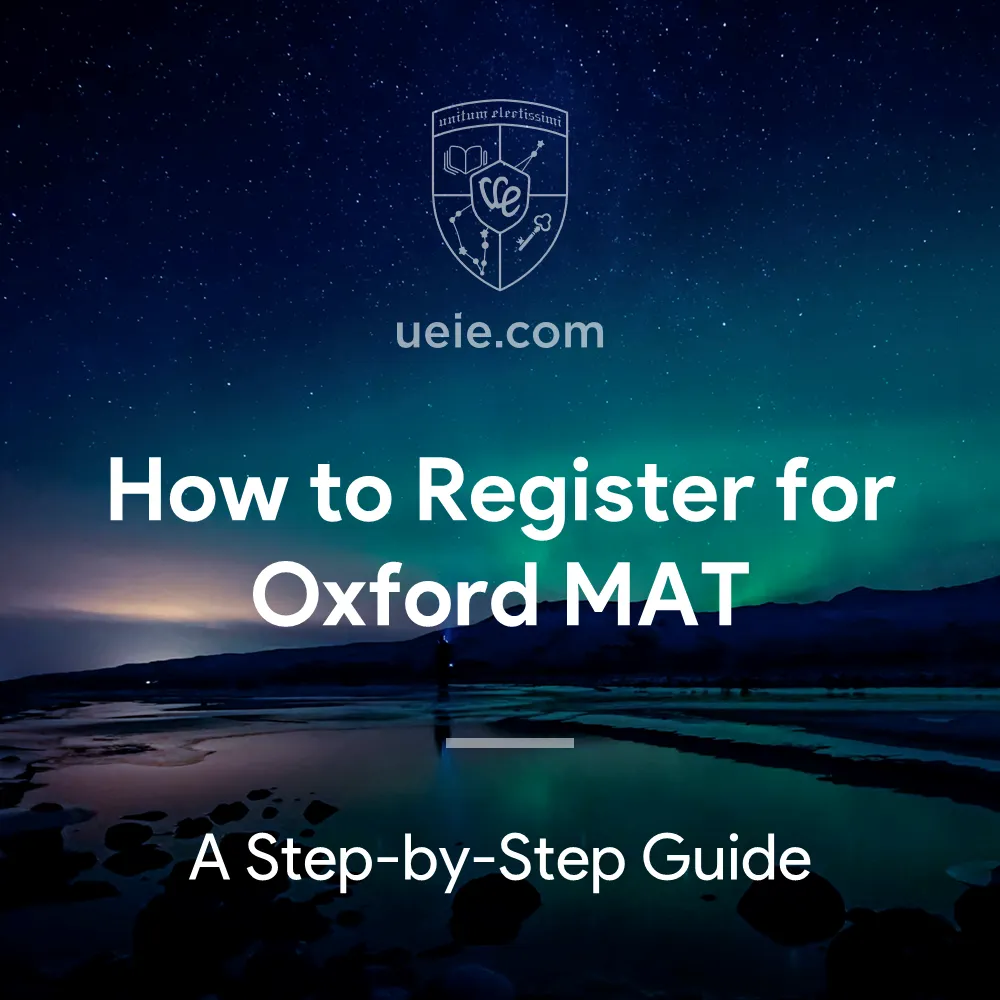
How to Register for Oxford MAT
The detailed guide on how to register for Oxford MAT. By four steps, you can increase your chances of a successful application to Oxford University.VIII. Oxford MAT Core Preparation Strategies and Resource Recommendations
Effective MAT preparation requires not only knowledge acquisition but also the right strategies and high-quality resources.
1. Overview of Core Preparation Strategies
The core of MAT preparation lies in enhancing the depth of mathematical thinking, the rigour of logical reasoning, and the ability to creatively solve problems. Unlike STEP, which focuses on the breadth and depth of knowledge, or TMUA, which emphasises speed and skill proficiency, the MAT places greater importance on a candidate’s mathematical insight demonstrated through foundational knowledge. Preparation should focus on:
- In-depth Understanding of Concepts: Do not be satisfied with superficial formulae; understand the meaning and connections between theorems and methods.
- Practising Problem-Solving Techniques: Develop the ability to apply knowledge in novel situations through high-quality questions (especially past papers).
- Cultivating Logical Thinking: Strengthen the habit of rigorous argumentation and clear expression of mathematical ideas.
For detailed strategies on how to create a preparation plan, learning methods for different stages, and targeted improvement of core abilities, please refer to my specially written:
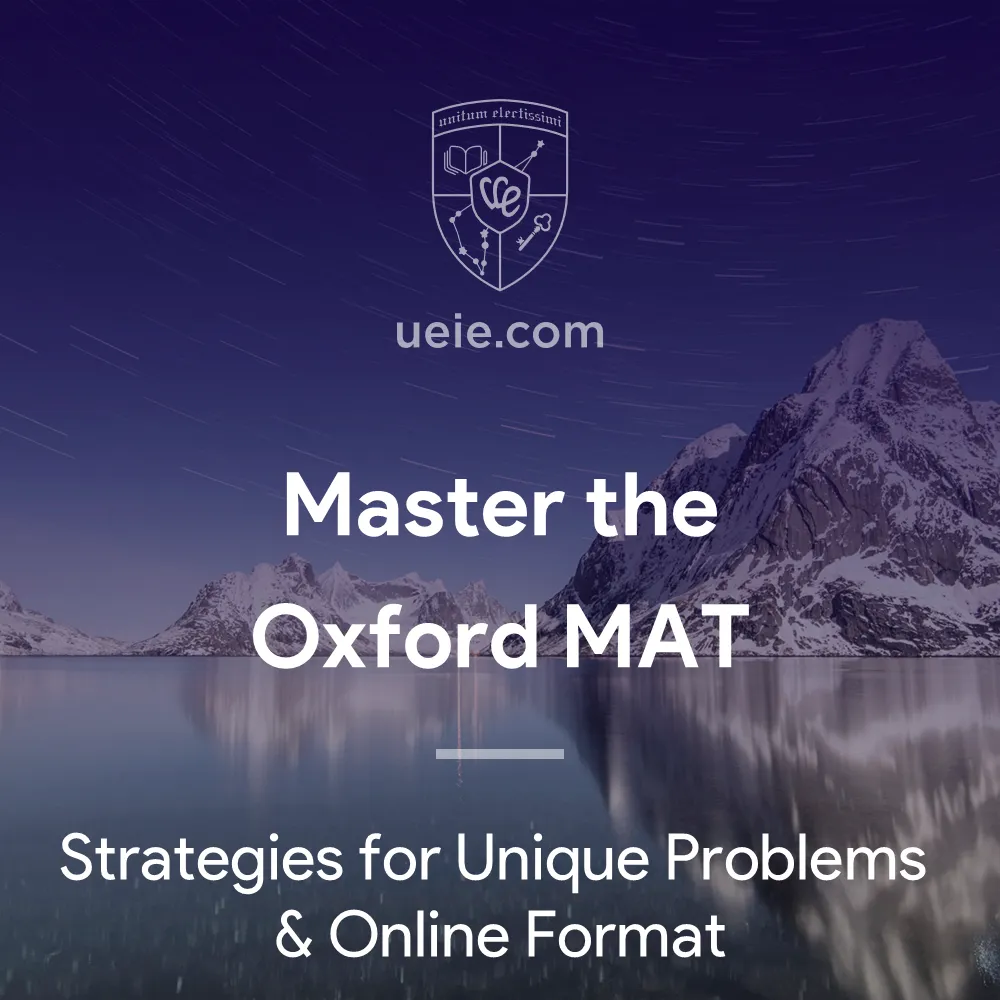
Master the Oxford MAT: Strategies for Unique Problems & Online Format
Master the Oxford MAT test for Maths & CS admissions. This guide provides strategies for tackling its unique problem-solving style, strengthening logical reasoning (no calculator), adapting to the online format (MCQ & keyboarded short answers), and effective planning.2. Official Core Preparation Resources
The University of Oxford’s Mathematical Institute website is the primary platform for obtaining the most authoritative MAT preparation information and materials.
All candidates are strongly advised to make full use of:
- Past Papers: The most crucial practice material for familiarising oneself with question types and difficulty levels.
- MAT Practice Tests: Using past MAT papers can help candidates become familiar with the actual examination interface and answering methods.
- Examination Syllabus: Clearly defines the scope and requirements of the examination.
- Annual Feedback Reports: Provide statistical data and analysis from previous examinations, offering insights into score distributions and common issues.
- Preparation Advice and Videos: Official preparation guidance and possible recordings of online lectures/live streams.
3. UEIE Oxford MAT Preparation Resources
To help candidates prepare for the MAT more systematically and efficiently, I (Mr. Xie Tao), based on many years of teaching and research experience, have developed and continually update a series of MAT test preparation courses and materials. This year’s newly released MAT self-study package includes:
- Oxford MAT Video Lecture Series: Contains in-depth explanations of examination points and accompanying PDF textbooks.
- Oxford MAT Practice Question Bank: Provides a vast number of practice questions categorised by topic, supplementing the limited official past papers and strengthening problem-solving skills.
- Oxford MAT Full-Length Mock Exams: Four sets of full mock examination papers. All questions are original or adapted and do not use past paper questions, suitable for optimising test-taking strategies and condition before the examination.
Click here to learn more about UEIE MAT preparation resource details:

TMUA & MAT On-Demand Prep Suite
The TMUA & MAT On-Demand Prep Suite is your all-in-one solution for exam success. This comprehensive package combines Xie Tao’s expert video lectures, a massive bank of 1360 practice questions with detailed solutions, and 12 full-length mock exams that mirror the real test. Prepare thoroughly, build confidence, and achieve your target score.US$1 286 – US$1 859Price range: US$1 286 through US$1 859
4. Other Supplementary Resources
The following resources can also help improve the mathematical thinking and problem-solving skills required for the MAT, and can be used selectively according to individual circumstances:
- Underground Mathematics: Provides a wealth of thought-provoking higher mathematics problem resources.
- STEP Support Programme: Although primarily aimed at STEP, the problem-solving methods and thinking training it offers are also beneficial for the MAT.
- Dr Frost Maths MAT Resources: Offers some MAT-related practice resources (requires searching within the website).
- Relevant Books: Such as books focused on mathematical thinking training or advanced problem-solving.
5. Core Advice
Resources should be chosen for quality, not quantity. It is essential to focus on official past papers and materials as the core, and selectively and thoroughly utilise high-quality supplementary resources, such as the systematised preparation programme offered by UEIE, to address individual weaknesses.
IX. Next Steps and Recommendations
After reading this ‘Comprehensive Guide to the Oxford MAT,’ you should have a clear and comprehensive understanding of this important entrance examination. To translate this understanding into effective application preparation, it is recommended that you take the following actions immediately:
1. Verify Official Requirements
Immediately visit the official University of Oxford admissions website to carefully confirm the latest and most accurate admissions requirements for 2026 entry, particularly the specific regulations for your target degree programme (confirm if MAT is mandatory).
2. Plan Examination Registration
Carefully read the Oxford MAT Registration Guide to fully understand the registration process, required materials, timelines, and test centre selection. Keep in mind the officially announced registration opening and closing dates, and ensure you complete your Oxford account registration and Pearson VUE test slot booking within the specified timeframe.
3. Develop a Preparation Plan
Study the Oxford MAT Preparation Guide in depth to create a detailed and feasible preparation plan tailored to your own situation. Start your preparation as early as possible, especially if you need to significantly improve your depth of mathematical thinking and problem-solving abilities.
4. Select and Utilise Resources
- Focus on Official Materials: Download and study the latest MAT test syllabus, official past papers, solutions, and preparation advice provided on the University of Oxford website.
- Systematic Learning: Based on your preparation plan, selectively use high-quality supplementary resources, such as the MAT preparation courses and materials offered by UEIE, for systematic learning and targeted training.
- Familiarise Yourself with the Platform: Use the Pearson VUE practice tests provided officially to become familiar with the online examination environment.

Oxford MAT Prep Hub
Master the Oxford MAT with UEIE’s Prep Hub! We offer everything you need to succeed: in-depth video lecture series, extensive practice question bank, realistic full-length mock exams, expert guides, and insightful data analysis.Finally, please remember that thorough preparation and a positive mindset are key to tackling the Oxford MAT challenge. I wish you success in your preparation and application, and ultimately, admission to your desired university!
-
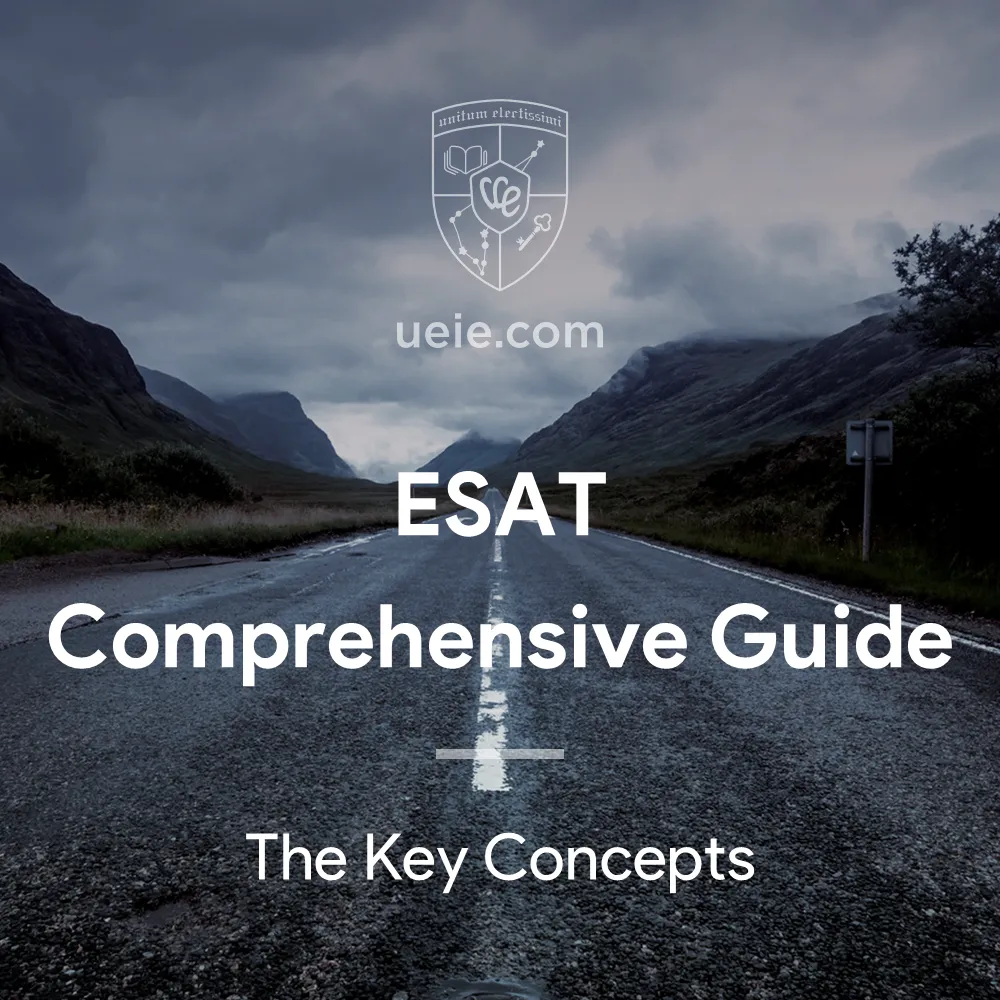
ESAT Explained: Navigating the Modular Test for Science & Engineering

The Engineering and Science Admissions Test (ESAT) is a pivotal assessment utilized by prominent universities, including the University of Cambridge, Imperial College London, and University College London (UCL). Its purpose is to evaluate the academic potential of undergraduate candidates applying for courses in engineering, natural sciences, and related disciplines. This document offers a systematic and comprehensive overview of the ESAT test, designed to help you thoroughly understand the latest requirements and essential information regarding the test. It covers critical aspects such as the test’s format, content, scoring system, and specific prerequisites. Once you have familiarised yourself with the details of the ESAT, it is highly recommended that you consult the ESAT Preparation Guide and ESAT Registration Guide, which I have authored, for more detailed instructions for registration and guidance on preparation strategies.
I. What is the ESAT Test?
ESAT stands for the Engineering and Science Admissions Test. It is a computer-based admissions test managed and operated by UAT-UK (University Admissions Tests – UK), a non-profit organisation jointly established by the University of Cambridge and Imperial College London.
The ESAT test aims to thoroughly assess the academic potential of students applying for specific undergraduate courses at universities like Cambridge and Imperial College, focusing on their ability to apply scientific and mathematical knowledge to solve complex problems.
The ESAT test is administered globally by Pearson VUE, a leading provider of assessment services.
II. ESAT Updates (2025/26 Admissions Cycle)
Since its initial implementation in 2024, the core format of ESAT—as a relatively new admissions assessment involving online computer-based testing, modular multiple-choice questions, and no calculators—remains consistent for the admissions cycle for entry in 2026.
The main updates pertain to operational aspects, such as specific test dates, registration windows, and associated fees for the 2025-2026 application cycle.
Regarding the ESAT itself, there is currently no information indicating significant changes to the test content, structure, or scoring criteria. Candidates are advised to regularly check the official UAT-UK website and the admissions pages of their target universities for the most authoritative and up-to-date official information.
III. Who Needs to Take the ESAT Test?
1. Universities and Courses Requiring ESAT
For students planning to apply for entry in 2026, the following universities require ESAT as part of the admissions assessment for specific undergraduate courses, departments, or faculties:
University Course / Department / Faculty University of Cambridge Chemical Engineering and Biotechnology Engineering Natural Sciences Veterinary Medicine
Imperial College London Department of Aeronautics Department of Chemical Engineering Department of Civil and Environmental Engineering Dyson School of Design Engineering Department of Electrical and Electronic Engineering Department of Mechanical Engineering Department of Physics University College London (UCL) Electronic and Electrical Engineering
Important Reminder: University admission requirements may be subject to minor adjustments each year. All applicants must visit the official admissions websites for their target institutions and specific courses to obtain the latest and most authoritative information regarding entrance test requirements for the 2026 entry cycle (including whether the ESAT test is needed and the specific combination of subject modules required). Do not rely solely on third-party information.
2. ESAT Module Selection
ESAT consists of five modules (Mathematics 1, Mathematics 2, Physics, Chemistry, Biology). The requirements vary by university and course, typically requiring candidates to select three modules:
- Compulsory Module: Mathematics 1 is usually a compulsory module required by all courses.
- Optional Modules: Two additional modules are selected based on the specific course requirements.
3. Examples of ESAT Module Choices for Different Courses
University of Cambridge:
- Engineering: Requires Mathematics 1 + Mathematics 2 + Physics.
- Other specified courses: Mathematics 1 is compulsory; the other two modules can be chosen freely from the remaining options.
Imperial College London:
- Chemical Engineering: Requires Mathematics 1 + Mathematics 2 + Chemistry.
- Physics / Aeronautics / Civil / Electrical / Mechanical Engineering: Most require Mathematics 1 + Mathematics 2 + Physics.
- Design Engineering: Requires Mathematics 1 + Mathematics 2; the third module can be chosen freely.
- Other specified courses: Mathematics 1 is compulsory; the other two modules can be chosen freely.
UCL:
- Electronic and Electrical Engineering: Mathematics 1 is compulsory; the other two modules can be chosen freely.
4. Candidate Responsibility
When registering for the ESAT test (via the Pearson VUE platform), candidates are responsible for selecting and registering for the correct combination of subject modules based on the requirements of all the institutions and courses they are applying to. Selecting incorrect modules may invalidate an application.
IV. Key Dates for the ESAT Test
Below is a summary of the key dates for the two test sittings in Autumn 2025 and early 2026. (Please note that registration periods are indicative; specific start and end dates require close attention to official updates).
1. Autumn 2025 (Sitting 1) Schedule
Key Stage Date Registration Period 31 July 2025 to 29 September 2025 Test Dates 9-10 October 2025 Results Released 14 November 2025* Key Restrictions:
- Candidates applying to relevant courses at the University of Cambridge must take the test in this sitting.
- Candidates applying to the University of Cambridge from mainland China, Hong Kong, and Macao are not permitted to take the test on 9 October and must sit the test on 10 October.
2. Early 2026 (Sitting 2) Schedule
Key Stage Date Registration Period 27 October to 19 December 2025 Test Dates 6-7 January 2026 Results Released Approximately 6 weeks after the test* Key Restriction:
- This sitting is not available for candidates applying to the University of Cambridge.
* UAT-UK will notify candidates by email when their results are available to view in their UAT-UK account. Candidates will also receive a document explaining their results to provide further information on how to interpret their scores.
V. ESAT Format and Structure
The specific format and structural elements of the ESAT test are summarised in the table below:
Feature Details Test Mode Online, computer-based test Test Location Authorised Pearson VUE test centres worldwide Subject Modules 5 independent modules: - Mathematics 1
- Mathematics 2
- Physics
- Chemistry
- Biology
Module Structure Each module consists of 27 multiple-choice questions Module Duration 40 minutes per module Timing Each module is timed independently and taken sequentially. Unused time from one module does not carry over to the next. Module Selection Candidates must select the module combination required by their chosen universities and courses (typically 3 modules; see Section III). Calculators Not permitted Dictionaries Not permitted Ancillary Tools An erasable booklet and pen will be provided at the test centre for rough work. Key Points Interpreted:
- Pace Requirement: Completing 27 science or mathematics multiple-choice questions in 40 minutes equates to approximately 1.5 minutes per question. This demands a high level of subject knowledge proficiency, problem-solving speed, and rapid judgment.
- Independent Module Timing: Requires candidates to possess good time management skills to allocate time effectively within each module.
- No-Calculator Environment: Places significant demands on candidates’ mental arithmetic, written calculation, estimation skills, and the memorisation and fluent application of formulae and constants.
VI. ESAT Scoring Mechanism and Results Interpretation
Understanding how ESAT is scored and what the scores mean helps candidates to evaluate their performance more scientifically and comprehend its role in the application process.
1. Scoring Method
- Basic Rule: 1 mark is awarded for each correct answer.
- No Penalty: No marks are deducted for incorrect or unanswered questions; they simply score 0.
- Raw Score: Each module contains 27 multiple-choice questions, resulting in a maximum raw score of 27 per module.
2. Results Presentation
- Score Conversion: To ensure comparability across different test versions and sittings, the raw score for each module (0-27) is converted to a standardised score on a scale of 1.0 to 9.0, typically reported to one decimal place.
- Independent Reporting: The candidate’s final results report will list the standardised score achieved for each subject module taken. No total or average score is calculated.
- Accessing Results: Test results are usually released approximately 6 weeks after the test date. Candidates receive an email notification and can access their results via their UAT-UK account. Exam boards typically send results automatically to UCAS-listed universities requiring the score.
3. Results Interpretation and Use
- No Fixed ‘Cut-off’ Score: Neither UAT-UK nor the admitting universities set a uniform ‘interview cut-off’ or ‘offer threshold’ score.
- Differentiation Tool: The test is designed to effectively differentiate amongst academically strong applicants, providing an additional dimension of comparison, particularly within a pool of high-achieving candidates.
- Holistic Assessment Component: The ESAT score is an important reference point in the university admissions assessment process but is by no means the sole criterion. Admissions tutors consider it alongside the applicant’s academic background (e.g., A Level/IB predicted or final grades), personal statement, references, and potentially interview performance.
4. Score Competitiveness Analysis
Based on the official UAT-UK interpretation of ESAT results for 2024/25, combined with personal experience from tutoring students, here is an interpretation of representative scores:
- 4.5 represents the average standard: This suggests that most students score around 4.5. Observations indicate that many students achieving A* grades in relevant A Level subjects can reach this level without specific systematic preparation. Universities generally consider a 4.5 score roughly equivalent to A* grades in relevant A Level subjects.
- Around 7.0 places candidates in the top 10%: Experience from previous application cycles suggests that students achieving an average score of 7.0 or higher across their three modules generally receive interview invitations from Cambridge and have a high success rate for offers from Imperial College.
- Only about 5% of candidates score 8.0 or above: Unquestionably, candidates scoring in the 8.0−9.0 range are extremely competitive. While final admission to Cambridge also depends on a holistic review including the interview and other materials, the likelihood of receiving a direct offer from Imperial College is very high.
VII. ESAT Syllabus Overview and Difficulty Analysis
Accurately understanding the scope and difficulty characteristics of the ESAT is fundamental to formulating an effective preparation plan.
1. Syllabus Scope
- Knowledge Base: The ESAT syllabus is broad, primarily based on the core knowledge of UK A Level (or equivalent qualification) Mathematics, Physics, Chemistry, and Biology. It assumes candidates possess a solid foundation in the corresponding subjects at GCSE level (or equivalent).
- No Advanced Content: The syllabus does not include A Level Further Mathematics content or topics beyond the scope of standard A Level Physics, Chemistry, or Biology.
2. Core Content Overview by Module
The following outlines the main knowledge areas covered by each module (for a detailed list, always refer to the official syllabus):
Mathematics 1:
- Fundamental arithmetic and number concepts, units, ratios and proportions, algebra (including equations, inequalities, polynomials), coordinate geometry and plane geometry, basic statistics and probability. (Roughly corresponds to GCSE and some A Level Mathematics content).
Physics:
- Electricity (circuits, fields), basic magnetism, kinematics, Newton’s laws, energy and momentum, circular motion, moments, basic thermal physics, properties of matter, waves (including basic optics), atomic physics and radioactivity. (Roughly corresponds to core AS and some A2 Physics content).
Chemistry:
- Atomic structure and periodicity, stoichiometry and equations, redox, bonding and structure, states of matter and particle theory, main group chemistry, separation techniques, acids, bases and salts, reaction kinetics, introductory chemical thermodynamics, introductory electrochemistry, core organic chemistry, metals and their reactions, air and water, introductory chemical analysis. (Roughly corresponds to core AS and some A2 Chemistry content).
Biology:
- Cell structure and function, biological molecules, enzymes, cell transport, cell division and genetics, DNA and gene technology, variation and evolution, animal physiology (respiration, circulation, digestion, nerves, endocrine system, etc.), plant physiology, ecosystems. (Roughly corresponds to core AS and some A2 Biology content).
Mathematics 2:
- Advanced algebra and functions (including polynomials, modulus function, mappings), sequences and series, coordinate geometry (including parametric equations, introduction to conic sections), trigonometry (including sum/difference formulae, double angle formulae, trigonometric equations/inequalities), exponential and logarithmic functions, calculus (differentiation, integration for area/volume), using calculus to analyse graphs. (Roughly corresponds to AS Mathematics and some A2 Pure Mathematics content).
3. Difficulty Characteristics Analysis
- Challenging by Design: Officials explicitly state that ESAT is designed to effectively differentiate top-tier applicants, and the questions are intended to be challenging.
- Breadth and Depth of Knowledge: The test covers a wide range, requiring a deep understanding and fluent mastery of core A Level knowledge, not just superficial memorisation. The multiple-choice format particularly tests the precision of conceptual understanding.
- Extreme Time Pressure: The average time of 1.5 minutes per question presents a significant challenge to knowledge retrieval speed, problem-solving efficiency, and rapid decision-making abilities.
- No-Calculator Environment: Places strict demands on the accuracy and speed of mathematical operations (mental arithmetic, written calculation, estimation), unit conversions, and the recall and application of formulae.
- Integrated Application Skills: Questions may integrate multiple concepts, requiring strong analytical and application skills from candidates.
- Overall Difficulty: Considered no less demanding than the NSAA/ENGAA tests it replaces, with high requirements for logical reasoning, mathematical application, and scientific literacy.
VIII. How to Register for the ESAT Test?
1. Main Process Overview
Pearson VUE primarily handles ESAT test registration. As UAT-UK’s official partner, their online platform manages bookings.
- Create a UAT-UK Account: After the registration period begins (expected from early June 2025), you will need to visit the Pearson VUE official website and follow the instructions to create a UAT-UK personal account. Please ensure that you use personal information consistent with your UCAS application and identification documents for registration.
- Book the Test and Select Modules: Once your account is successfully created and you have logged in, during the exam booking window (expected from early August 2025), you can book the ESAT test within the Pearson VUE system. The crucial step is to select the correct combination of subject modules based on the university program requirements as described in Part Three and verified by you. Simultaneously, you need to choose a suitable exam date, time, and test center.
- Pay the Test Fee: Follow the system prompts to complete the online payment of the exam fee.
- Confirm Registration Information: Before submission, carefully review all registration information, including personal details, exam subjects, time, and location. You will usually receive a confirmation email after successful registration.
2. Obtain Detailed Registration Guidance
For specific account registration steps, detailed information required, methods for querying and selecting test centers, payment methods, the process and deadlines for applying for special exam arrangements (if needed), and important notes during the registration process, you can log in to the Pearson VUE official website or refer to our specially compiled ESAT Registration Guide for complete and detailed step-by-step operational guidance.

How to Register for ESAT
Our comprehensive 4-step guide is designed to make it easy for you to register for ESAT. Follow our instructions to complete your application.IX. Core Preparation Strategies and Resource Recommendations
1. Core Preparation Strategies
To successfully meet the challenge of ESAT, preparation needs to focus on the following core areas:
- Knowledge Level: Deeply understand and master the A Level (or equivalent) mathematics and science knowledge required by the official syllabus.
- Skill Level: For the online multiple-choice format, focus on training for extremely high problem-solving speed and accuracy, proficient multiple-choice test-taking skills, and complete adaptation to a calculator-free calculation environment.
- Practical Level: Through extensive practice and simulation, transform knowledge and skills into stable performance under time pressure, and familiarize yourself with the operation of the online examination platform.
The above are only the core directions for ESAT preparation. For detailed strategies and steps on how to systematically plan your preparation, implement learning in stages, use specific training methods (such as error analysis, time management skills), and improve specific abilities, please be sure to read my specially written: ESAT Preparation Guide

Conquer the ESAT: Multi-Subject Strategies for Online Test Success
Conquer the ESAT test required for top Science & Engineering courses. This guide offers strategies for multi-subject preparation (Maths, Physics, Chem, Bio), mastering the online format, enhancing speed & accuracy without a calculator, and effective resource use.2. Official Core Resources
You can obtain the most authoritative information through the core channels on the UAT-UK official website, including:
- The latest version of the ESAT test syllabus
- Official sample questions and practice materials
- Exam guidance and frequently asked questions
- Past papers for ENGAA and NSAA (2016-2023)
3. UEIE ESAT Courses and Materials
To help candidates prepare systematically and efficiently, I, Teacher Xie Tao, led an experienced teaching team. Together, we developed the ‘UEIE ESAT Self-Study Package’, which includes:
- ESAT Video Lecture Series: In-depth explanations of core test points and problem-solving methods (covering Mathematics 1, Mathematics 2, and Physics modules).
- ESAT Practice Question Bank: Provides a vast number of online practice questions, graded by topic and difficulty, for intensive training (covering Mathematics 1, Mathematics 2, and Physics modules).
- ESAT Full-Length Mock Exams: Multiple sets of high-quality original online mock test papers, covering all five subject modules.
We annually revise and update these materials. This ensures they match the latest exam trends and requirements.

ESAT & PAT On-Demand Prep Suite
The ESAT & PAT On-Demand Prep Suite, developed by Xie Tao, is your all-in-one solution for exam success, which includes video lectures covering Maths, Physics, over 1600 practice questions with detailed solutions, and full-length mock exams for ESAT Maths 1, Maths 2, Physics, and the Oxford PAT. Prepare thoroughly and maximise your score.US$613 – US$2 432Price range: US$613 through US$2 432
In addition, we also cooperate with several international schools to offer ESAT preparation classes. Interested students and parents can learn more about related courses and materials through the following link.
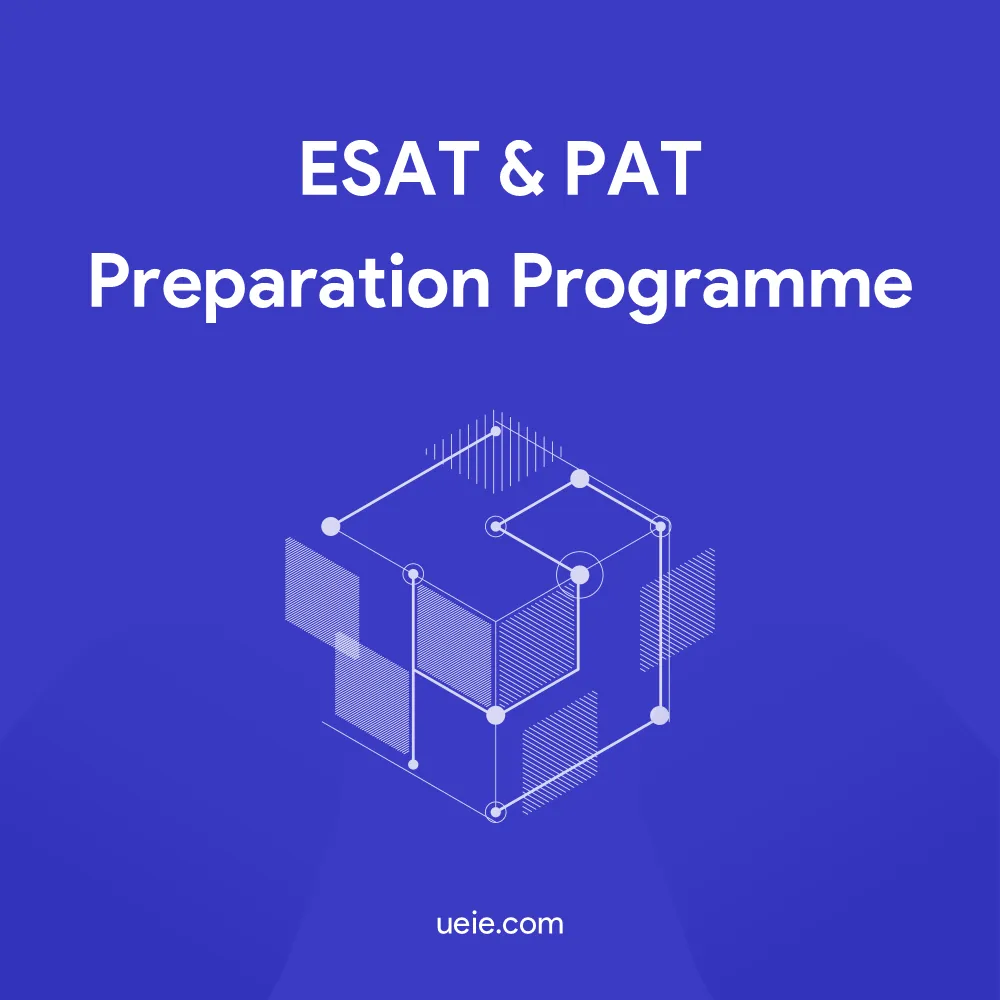
ESAT & PAT Preparation Programme
All-in-one exclusive resources. This programme features a 3000+ question bank, 9 unseen mock exams for each test, and 3 ESAT predictive papers to help you systematically master both new exams. Click to view the bundle.US$3 838 – US$14 291Price range: US$3 838 through US$14 291
4. Other Supplementary Resources
- High-Quality Online Question Banks: Platforms like Isaac Physics offer a large number of practice questions related to A Level Physics and Mathematics that help develop thinking skills.
- Relevant Subject Textbooks and Workbooks: Quality textbooks and workbooks for A Level subjects help consolidate foundational knowledge.
- Past Papers from Related Exams: Some questions from the discontinued NSAA/ENGAA exams, after careful comparison with the syllabus and question types, can be selectively used to practice specific knowledge points or ways of thinking.
5. Resource Usage Suggestions
- Prioritize Official Materials: Focus on the UAT-UK official syllabus and sample/past papers.
- Targeted Approach: Selectively use supplementary resources based on your preparation stage and areas of weakness.
- Choose Quality over Quantity: Resources should be high-quality rather than numerous to avoid information overload.
- Active Learning: Actively think, deeply review, and summarize when using any resource.
X. Next Steps Recommended
After reviewing this ESAT Comprehensive Guide, you should now possess a clear and thorough understanding of this significant admissions assessment. To transform this knowledge into effective application preparation, I recommend the following actions:
1. Verify Official Requirements
Promptly visit the official admissions websites for all your target universities and programs. Reconfirm their latest and most accurate entrance requirements for 2026 matriculation, paying particular attention to whether ESAT is mandatory and the specific combination of subject modules required. This information is foundational to all subsequent planning.
2. Plan Your ESAT Test Registration
Carefully read the ESAT Registration Guide to gain a complete understanding of the procedural details, including account creation, information submission, test center selection, fee payment, and applications for special accommodations.
3. Develop a Preparation Strategy
Thoroughly study the ESAT Preparation Guide. Tailor a detailed, actionable, and phased study plan to your individual circumstances, and begin your preparations as early as possible.
4. Select High-Quality Study Materials
In line with your preparation strategy, selectively utilize high-quality supplementary resources. For example, leverage the preparatory courses and materials available on the UEIE ESAT Preparation Hub for systematic study and targeted practice.

ESAT Prep Hub
Master the ESAT with UEIE’s Prep Hub! We offer everything you need to succeed: in-depth video lecture series, extensive practice question bank, realistic full-length mock exams, expert guides, and insightful data analysis.Finally, I wish you the very best in your ESAT preparation and hope you achieve your desired outcomes in your university applications!
-
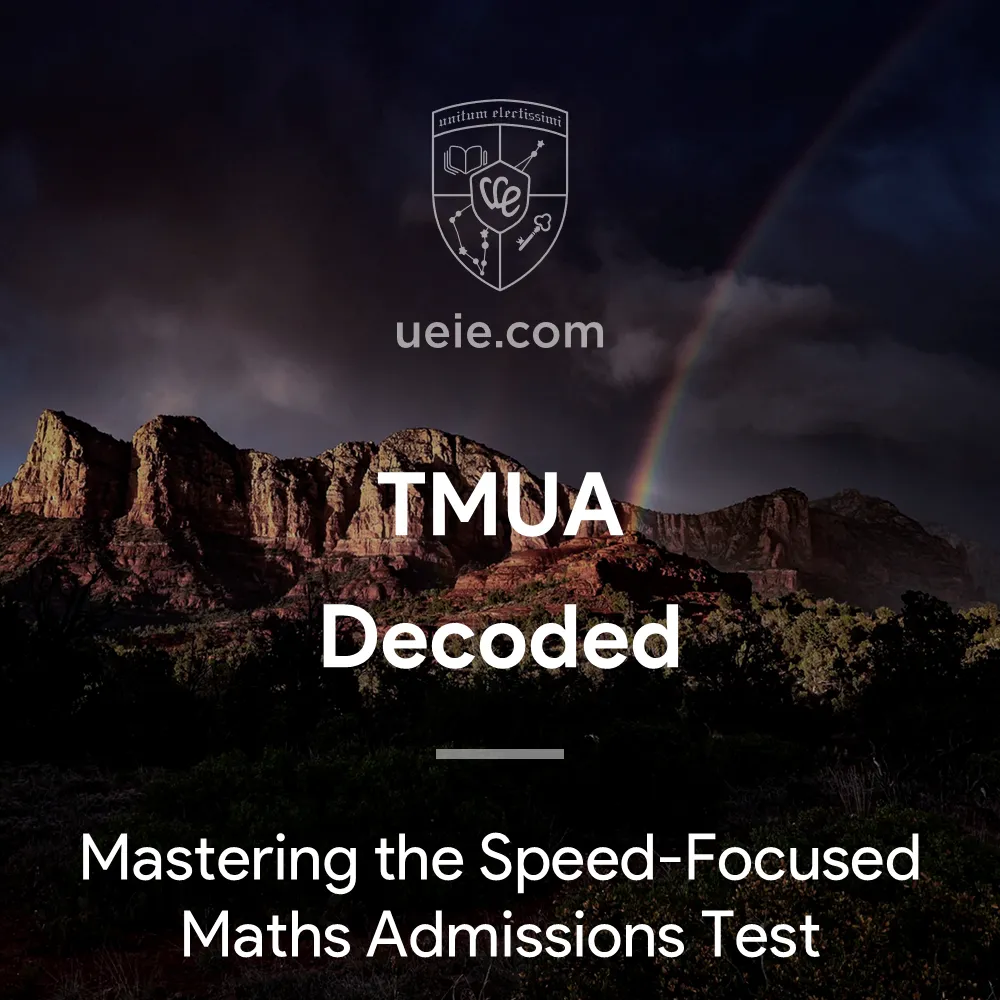
TMUA Decoded: Mastering the Speed-Focused Maths Admissions Test
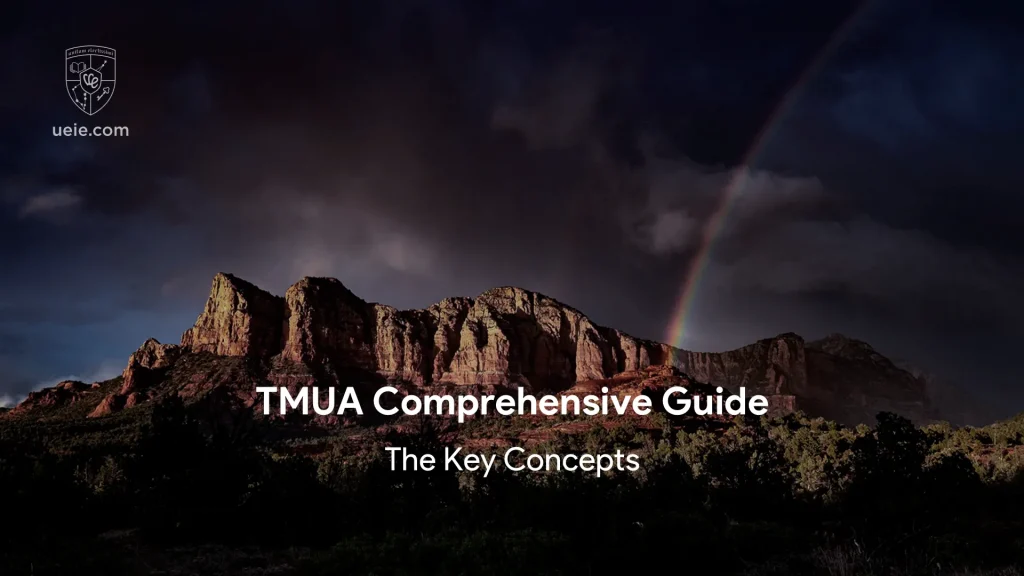
The Test of Mathematics for University Admission (TMUA) is increasingly utilised by leading UK universities as a key means of evaluating applicants’ mathematical aptitude and potential. To help you get fully up to speed with the latest requirements and test details for the 2026 entry application cycle, I’ve drawn on my years of experience coaching for Oxbridge admissions tests to write this TMUA Comprehensive Guide. This guide provides a systematic overview of the latest TMUA developments, university requirements, key dates, test format, scoring criteria, syllabus content, and essential preparation resources, offering you a comprehensive and authoritative reference.
Once you have a general understanding of the TMUA, we recommend reading follow-up UEIE articles: TMUA Registration Guide and TMUA Preparation Guide, for more detailed instructions on registration and preparation strategies.
I. What is the TMUA Mathematics Test?
TMUA stands for the Test of Mathematics for University Admission. Its primary purpose is to assess an applicant’s ability to apply mathematical knowledge to solve problems, as well as their potential for mathematical reasoning. Several top UK universities – including the University of Cambridge, Imperial College London, the London School of Economics and Political Science (LSE), and University College London (UCL) – use the TMUA to help select applicants for undergraduate courses in Mathematics, Computer Science, Economics, and related disciplines.
II. Latest Updates on the 2025 TMUA Test
The TMUA test has undergone significant adjustments in recent years. Keeping abreast of these latest developments is crucial for both preparation and registration.
1. Unified Management Body UAT-UK
Since 2024, TMUA has been managed centrally by UAT-UK, a non-profit organisation jointly established by the University of Cambridge and Imperial College London. It now forms part of their assessment framework alongside the Engineering and Science Admissions Test (ESAT) and the Thinking Assessment for Arts and Humanities (TARA, introduced in 2025).
2. Test Format and Delivery Partner
TMUA is administered as an online, computer-based test. It is delivered by the global assessment provider Pearson VUE through its worldwide network of certified test centres.
3. Specific Date Arrangements and Restrictions
Since 2024, TMUA typically offers testing windows in October and the following January.
- Testing Window Choice: Candidates applying for 2026 entry to relevant courses at the University of Cambridge must take the test in October 2025; the January 2026 session is not an option for them.
- Specific Date Restriction: Candidates applying to the University of Cambridge from Mainland China, Hong Kong, or Macau are not permitted to take the TMUA test on 13 October 2025. Consequently, applicants from these regions targeting relevant Cambridge courses can only sit the TMUA on 14 October 2025.
- Verification is Essential: Please be aware that the specific dates and times available for booking may differ between test centres. Always consult the Pearson VUE registration system and official UAT-UK announcements for the most accurate and up-to-date information.
4. Increasingly Specific University Requirements
As the UAT-UK assessment system has become established, TMUA’s significance as an admissions tool for certain leading universities and specific degree programmes (particularly in Mathematics, Computer Science, and Economics) has grown. Several programmes now mandate or strongly recommend the TMUA (further details are provided in the next section).
III. Who Needs to Take the TMUA Test? (For 2026 Entry)
Specific TMUA requirements vary between UK universities and degree programmes. These requirements can change annually and can be quite detailed (e.g., specifying whether the test is compulsory, recommended, or simply an alternative option). Therefore, all candidates are strongly advised to treat the official websites of their chosen universities as the ultimate authority for the latest admissions information specific to 2026 entry.
1. G5 University Courses Requiring TMUA Scores
The table below lists G5 university courses known to require TMUA scores, provided for reference.
University Courses Approximate Score Reference* Alternative Test / Notes University of Cambridge Computer Science (G400) 7.5+ Usually no alternative Economics (L100) 7.0+ Usually no alternative Imperial College London Mathematics Dept. Programmes (G100, G103, etc.) 6.5+ STEP might be considered in exceptional circumstances, e.g., post-deadline (check website for latest info) Economics, Finance and Data Science (L1N3) 6.5+ London School of Economics (LSE) Economics (L101) 7.0+ Econometrics and Mathematical Economics (L142) 7.0+ Mathematics and Economics (GL11) 7.0+ University College London (UCL) Economics (L100) 6.5+ UCL’s test requirements are complex; check website. Some economics-related programmes may move to TARA *Approximate Score Reference: This is based on unofficial data from previous admission cycles and does not represent a minimum required score.
2. TMUA Requirements at Other Universities
- University of Warwick: Requires applicants for Mathematics, Statistics, Computer Science, and Economics-related courses to submit TMUA scores. However, for Mathematics and Statistics courses, STEP or AEA scores may be accepted as alternatives.
- Durham University, University of Bath, and others: In the past, some Mathematics, Economics, and Computer Science related courses at these and other universities have also required TMUA scores.
Requirements regarding the TMUA test for specific courses at different universities can change. Once you have decided which universities and courses you are applying to, it is recommended that you consult the official university websites to understand the latest and most accurate entry requirements.
IV. TMUA Test Key Dates
Below is a summary of the key dates for the Autumn 2025 and Early 2026 testing sessions. Please note that the registration periods shown are provisional; you should closely monitor official announcements for confirmed dates.
1. Autumn 2025 (1st Sitting) Schedule
Key Stage Date Registration Period 31 Jul – 29 Sep 2025 Test Dates 13–14 October 2025 Results Release 14 Nov 2025* Key Restrictions:
- Candidates applying for Economics and Computer Science at the University of Cambridge must take the test during this session.
- Candidates applying to the University of Cambridge from Mainland China, Hong Kong, or Macau are not permitted to sit the test on 13 October 2025 and must therefore take it on 14 October 2025.
2. Early 2026 (2nd Sitting) Schedule
Key Stage Date Registration Period 27 Oct – 19 Dec 2025 Test Dates 8–9 January 2026 Results Release Approx. 6 weeks after test* Key Restrictions:
- This session is not available for candidates applying to the University of Cambridge.
*UAT-UK will notify candidates by email when their results are available to view in their UAT-UK account. Candidates will also receive a document explaining how to interpret their results.
V. TMUA Test Format and Structure
The table below summarises the key elements of the TMUA test format.
Item Details Format Online Computer-based Test, taken at a Pearson VUE test centre. Paper Structure Two Papers: - Paper 1: Applications of Mathematical Knowledge
- Paper 2: Mathematical Reasoning
Question Type Multiple Choice Questions Number of Questions 20 questions per paper, total 40 multiple-choice questions. Duration 75 minutes per paper, total 150 minutes. Timing Each paper is timed separately. Time unused in Paper 1 cannot be carried over to Paper 2. Calculator Calculators are not permitted. Formula Sheet Formula sheets are not permitted. VI. TMUA Scoring Mechanism and Result Interpretation
1. Scoring Mechanism and Score Conversion
- Raw Score: Each multiple-choice question is worth 1 mark. Incorrect answers or unanswered questions score 0 marks. The maximum raw score for each paper is 20, making the total maximum raw score for the test 40.
- Score Conversion: To ensure comparability of results across different test sittings, raw scores are converted to a standardised scale ranging from 1.0 to 9.0, usually reported to one decimal place. Universities primarily use this 9.0-scale standardised score for assessment purposes.
- Important Change in Results Report: From 2024 onwards, the official TMUA results report provided by UAT-UK only includes the overall converted score, no longer providing separate converted scores for Paper 1 and Paper 2. A more detailed official explanation of the results report can be downloaded from the UAT-UK website.
2. Result Interpretation: Competitiveness Analysis by Score Band
There is no official Pass Mark for TMUA. Whether a score is competitive depends entirely on the university and course you are applying to, as well as the overall standard of applicants in that year. Based on the official UAT-UK explanation of the 2024/25 TMUA results and my own experience with students, here is an interpretation of some representative scores:
- 4.5 is the average score: This suggests that most students achieve scores around 4.5. From observing numerous students, the majority who attain an A* in A-Level Mathematics can reach this level without systematic preparation. A score of 4.5 can be broadly considered equivalent to an A* standard in A-Level Maths.
- Around 7.0 places you in the top 10%: Based on application cases from students I coached last year, those achieving this score typically received interview invitations from Cambridge and had a high success rate in securing offers from other G5 universities like Imperial and LSE.
- Only about 5% of candidates score 8.0 or above: Candidates scoring in the 8.0-9.0 range are undoubtedly highly competitive. Although Cambridge’s final decision also considers interview performance and other application materials, such scores significantly increase the chances of receiving offers from top institutions like Imperial, LSE, and UCL.
VII. TMUA Syllabus and Difficulty Analysis
Understanding what TMUA assesses and where its difficulties lie is fundamental to devising an effective preparation plan.
1. Syllabus Overview for TMUA Test
Although the organising body for TMUA test changed in 2024, the overall syllabus has seen little change, especially for Paper 2, where the syllabus remained untouched.
Paper 1: Applications of Mathematical Knowledge
- Assessment Objective: To assess the candidate’s ability to apply mathematical knowledge flexibly to solve problems.
- Knowledge Scope: Primarily based on AS Level Mathematics content, including Algebra and Functions, Coordinate Geometry, Sequences and Series, Trigonometry, Exponentials and Logarithms, Calculus, and Graphing Functions. It also covers some GCSE Mathematics content, such as Number and Units, Ratio and Proportion, Basic Algebra, Geometry, Statistics, and Probability.
Paper 2: Mathematical Reasoning
- Assessment Objective: To assess the candidate’s ability in mathematical reasoning and logical thinking.
- Knowledge Scope: Builds upon the mathematical knowledge required for Paper 1.
- Emphasis: Focuses on understanding the logic of arguments, mathematical proof (including identifying common errors in proofs), and higher-level logical reasoning problems.
Accessing the Official Latest Syllabus
Please ensure you consult the latest version of the TMUA syllabus document published on the UAT-UK official website.
2. Difficulty Characteristics Analysis
The difficulty of TMUA differs from tests like STEP. It doesn’t lie in the intrinsic complexity or abstruseness of the problems, but rather in the following aspects:
- Extreme Time Pressure: The average time of 3.75 minutes per multiple-choice question is the core challenge of TMUA test. This demands not only solid knowledge but also exceptional problem-solving efficiency and speed.
- Breadth of Knowledge and Fluency: The test covers a wide range, requiring candidates to be extremely fluent with fundamental concepts, able to recall and apply them quickly and accurately. The prohibition of calculators places higher demands on mental arithmetic and written calculation skills.
- Mathematical Reasoning Requirements: The logical thinking, proof comprehension, and error identification skills tested in Paper 2 require dedicated training to adapt and improve accuracy.
- Multiple-Choice Format: Although multiple-choice, the questions and options are often cleverly designed, incorporating traps and distractors, necessitating careful reading, precise calculation, and effective elimination. There are no marks for working, yet the demand for accuracy is extremely high.
In short, TMUA primarily assesses a student’s fluent application of mathematical knowledge and the agility and accuracy of their mathematical reasoning under strict time constraints. Its difficulty stems more from the demands for ‘speed’ and ‘accuracy’ rather than ‘depth’ and ‘complexity’.
VIII. How to Register for the TMUA Test?
Since 2024, the registration process for the TMUA test has changed compared to the past, primarily conducted through the officially designated online platform.
1. Main Pathway
Candidates need to register via the website of Pearson VUE, the official partner testing service for UAT-UK. This usually involves first creating a UAT-UK personal account and then using that account to book a test session and location.
2. Key Reminders
- Registration Deadline: Pay close attention to the official registration deadline for the test session you plan to take (refer to Section IV of this article, and confirm with the final official announcement). Complete registration and payment in advance.
- Limited Test Slots: Test slots in popular locations may be limited. It is advisable to register and book your test as early as possible once registration opens.
3. Registration Process
Detailed information regarding the steps for account creation, required information, test centre search and selection, test fees, payment methods, and applications for special arrangements (if needed) are all explained step-by-step in our dedicated guide.
Please click the following post for the most complete and accurate operational instructions.
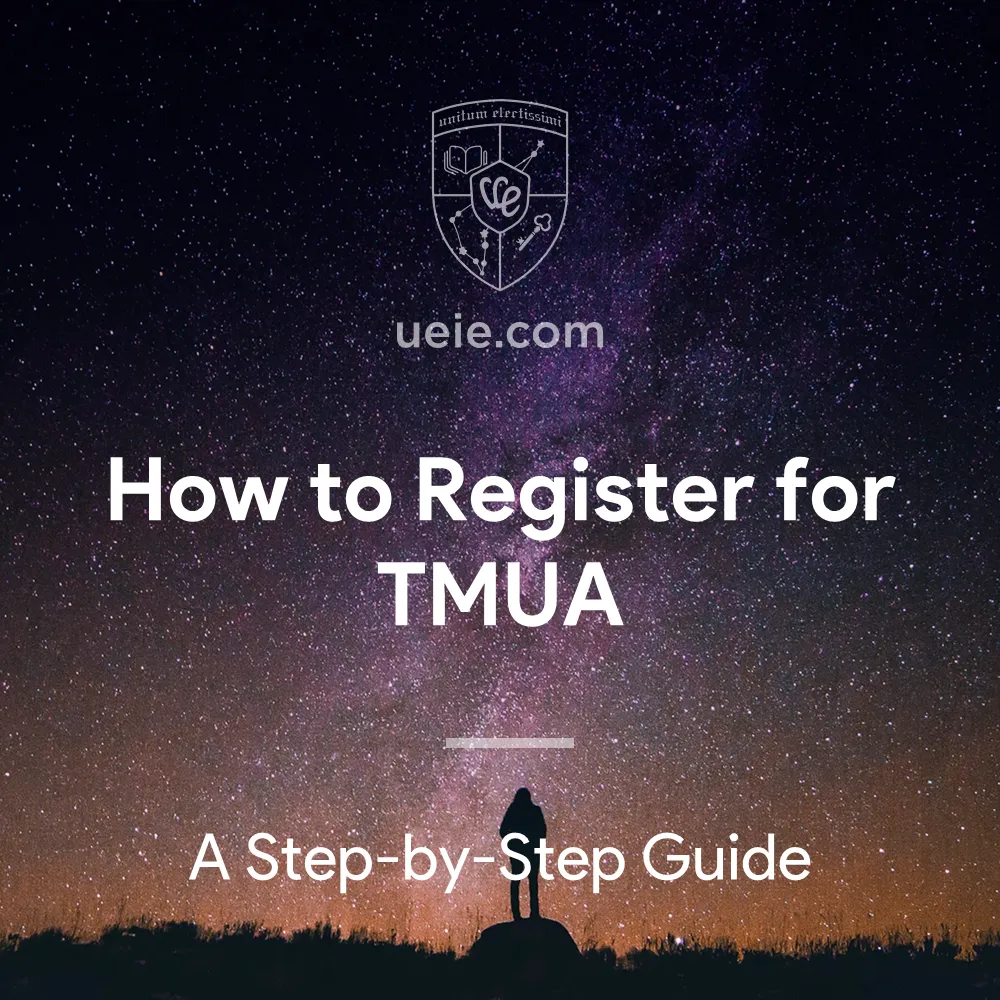
How to Register for TMUA
Unlock your TMUA potential with our comprehensive guide! Follow our 4-step plan to register for TMUA and boost your application.IX. TMUA Test Core Preparation Strategy and Resource Recommendations
Having grasped the fundamental information about TMUA, how should one approach preparation? I will first outline the core preparation strategy, then recommend relevant resources.
1. Core Preparation Strategy for the TMUA Test
Given that TMUA primarily assesses the fluent application of mathematical knowledge, agility and accuracy in mathematical reasoning, under strict time limits (see Section VII), the preparation strategy should focus on:
- Knowledge Level: You must achieve high fluency in the required AS Mathematics and relevant GCSE content outlined in the syllabus, ensuring concepts can be recalled instantly and applied rapidly.
- Skills Level: Focus on training and improving calculation speed and precision (in a non-calculator environment), agility in logical judgement, and strategies and techniques for tackling multiple-choice questions (especially identifying distractors).
- Practice Level: Extensive, targeted timed practice is essential to adapt to the exam pace and translate knowledge and skills into stable performance under pressure.
The above represent the core directions for TMUA preparation. For detailed strategies and steps on systematically planning preparation, implementing phased learning, using specific training methods (like error analysis, time management techniques), and enhancing specific abilities, please be sure to read my dedicated post TMUA Preparation Guide.
TMUA Preparation Guide:

Conquer the TMUA: Speed & Accuracy Training for Top Maths Scores
Aiming for a high score in the speed-focused TMUA test? This guide provides core strategies for effective preparation, focusing on enhancing calculation speed & accuracy (no calculator), developing logical agility, mastering MCQ techniques, and resource planning.2. Official Core Resources
You can obtain the most authoritative information from the UAT-UK official website, including:
- The latest version of the TMUA syllabus
- Official specimen papers and practice materials
- Examination guidance and FAQs
- Past papers (2016-2024)
3. UEIE TMUA Courses and Materials
To enhance the efficiency and effectiveness of TMUA preparation, I (Mr. Xie Tao) have developed a comprehensive set of TMUA preparation materials based on years of admissions test teaching experience. This set includes detailed video lectures, accompanying PDF textbooks, online practice question banks, and full-length mock exams. I revise and update these materials annually to ensure they align with the latest exam trends and requirements.
TMUA & MAT On-Demand Prep Suite

TMUA & MAT On-Demand Prep Suite
The TMUA & MAT On-Demand Prep Suite is your all-in-one solution for exam success. This comprehensive package combines Xie Tao’s expert video lectures, a massive bank of 1360 practice questions with detailed solutions, and 12 full-length mock exams that mirror the real test. Prepare thoroughly, build confidence, and achieve your target score.US$1 286 – US$1 859Price range: US$1 286 through US$1 859
Additionally, I collaborate with several international schools to offer TMUA preparation classes. Interested students and parents can find details about related courses and materials via the following link.
TMUA & MAT Live Classes
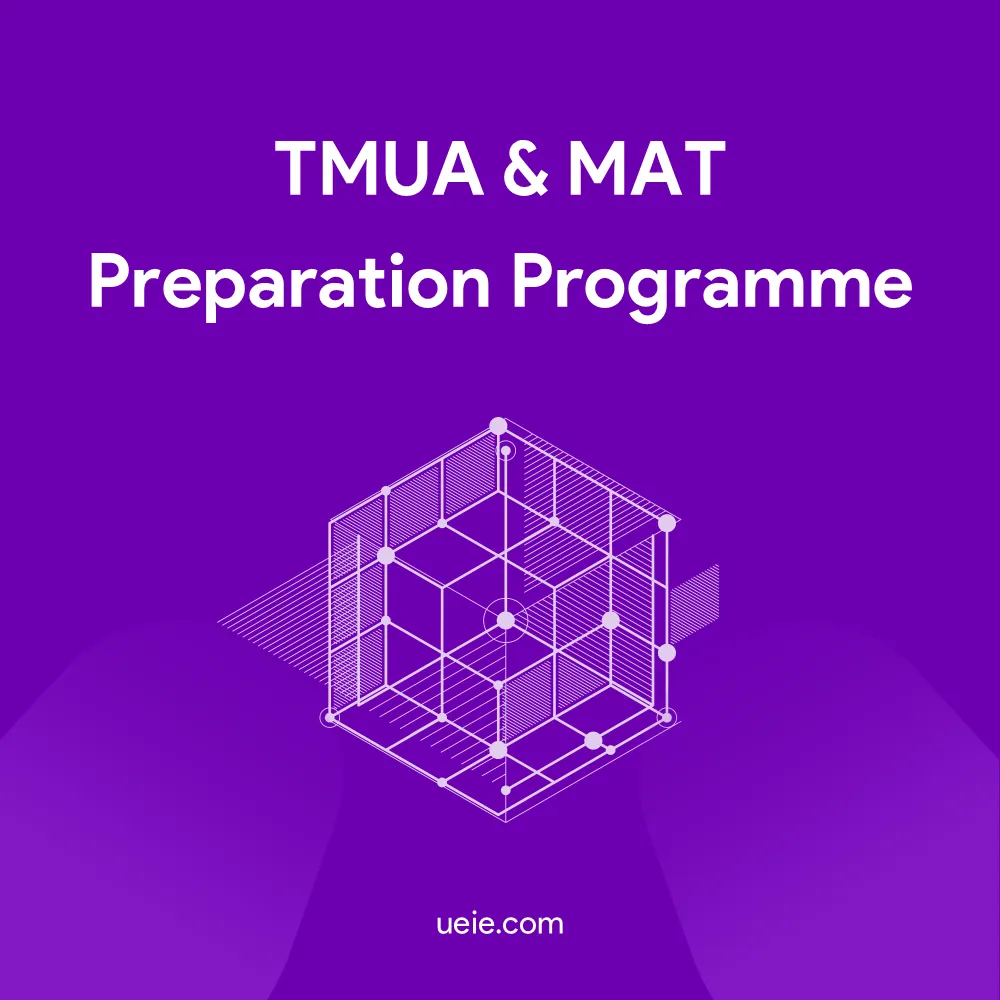
TMUA & MAT Preparation Programme
Prep for both and save time. This all-in-one programme provides 130 periods, 9 unseen TMUA mocks, 3 predictive papers, and 6 MAT mocks, helping you systematically master both exams. Click to view the bundle.US$3 838 – US$14 291Price range: US$3 838 through US$14 291
4. Other Supplementary Resources
- Relevant Mathematics Resource Websites: Websites like MEI (Mathematics Education Innovation) offer practice questions and resources related to AS/GCSE Mathematics.
- Problem-Solving Books: Some books focus on enhancing mathematical thinking, problem-solving speed, and accuracy.
- Online Communities and Forums: Platforms like The Student Room (TSR) may offer shared experiences, but please evaluate information critically.
5. Resource Usage Suggestions
- Prioritise Official Materials: Use the UAT-UK official syllabus and specimen/past papers as the core.
- Be Targeted: Select supplementary resources based on your preparation stage and weak areas.
- Select Efficiently: Quality over quantity; avoid information overload.
- Engage Actively: Actively think, deeply review, and summarise when using any resource.
X. Next Steps Recommended
After reading this Comprehensive Guide to TMUA, you should have a clear grasp of the key information regarding this test. To translate this understanding into effective application preparation, we recommend you take the following actions immediately:
1. Verify Official Requirements
Immediately visit the official admissions websites of your target universities and courses. Carefully confirm their latest and most accurate entry requirements for 2026 entry, especially regarding specific regulations for TMUA (or other admissions tests), score references, and alternative options.
2. Plan Exam Registration
Read the TMUA Registration Guide in detail to fully understand the registration process, required materials, deadlines, and test centre selection. Remember the registration deadlines and ensure you complete registration and booking within the specified timeframe.
3. Develop a Preparation Plan
Study the TMUA Preparation Guide thoroughly. Combining the difficulty analysis from Section VII and the preparation strategy from Section IX of this article, create a detailed and feasible preparation plan tailored to your situation. Start preparation early, especially for those needing significant improvement in speed and fluency.
4. Select Preparation Resources Carefully
Download and study the latest TMUA syllabus and official specimen/past papers from the UAT-UK website. Based on your preparation plan, selectively use high-quality supplementary resources, such as the preparation courses and materials offered on the UEIE TMUA preparation page, for systematic learning and targeted training.

TMUA Prep Hub
Master the TMUA with UEIE’s Prep Hub! We offer everything you need to succeed: in-depth video lecture series, extensive practice question bank, realistic full-length mock exams, expert guides, and insightful data analysis.Finally, thorough preparation and a positive attitude are key to tackling the TMUA challenge. Wishing you success in your preparation and application, ultimately securing an offer from your desired university!